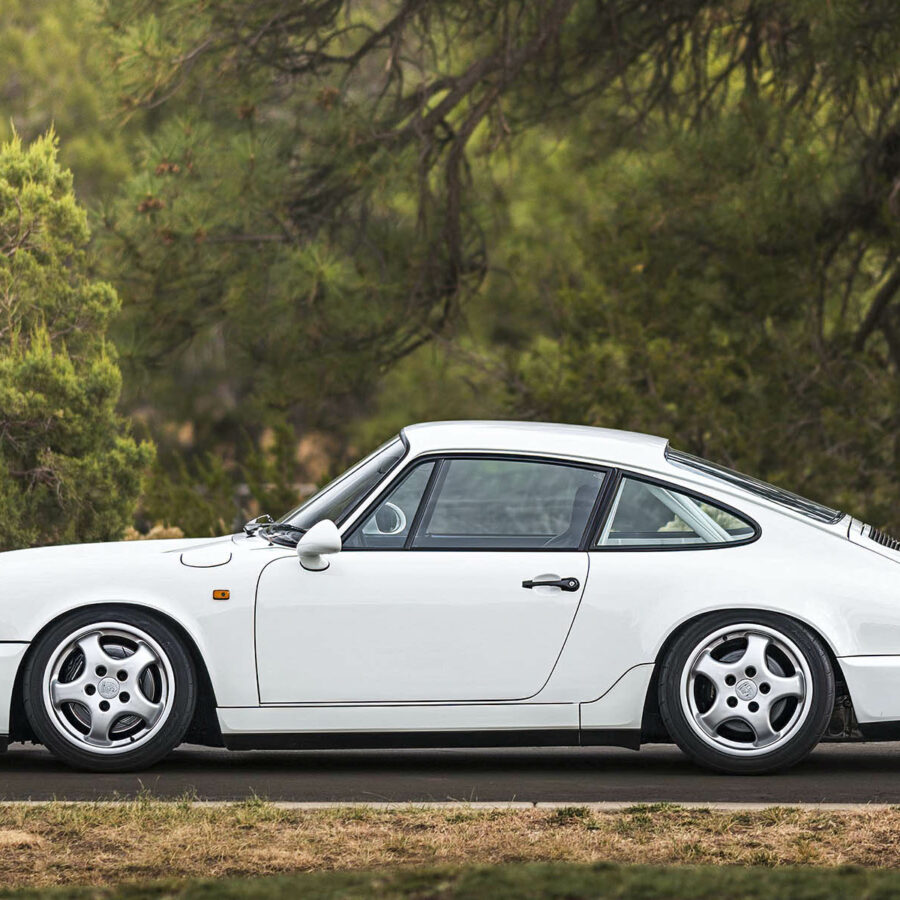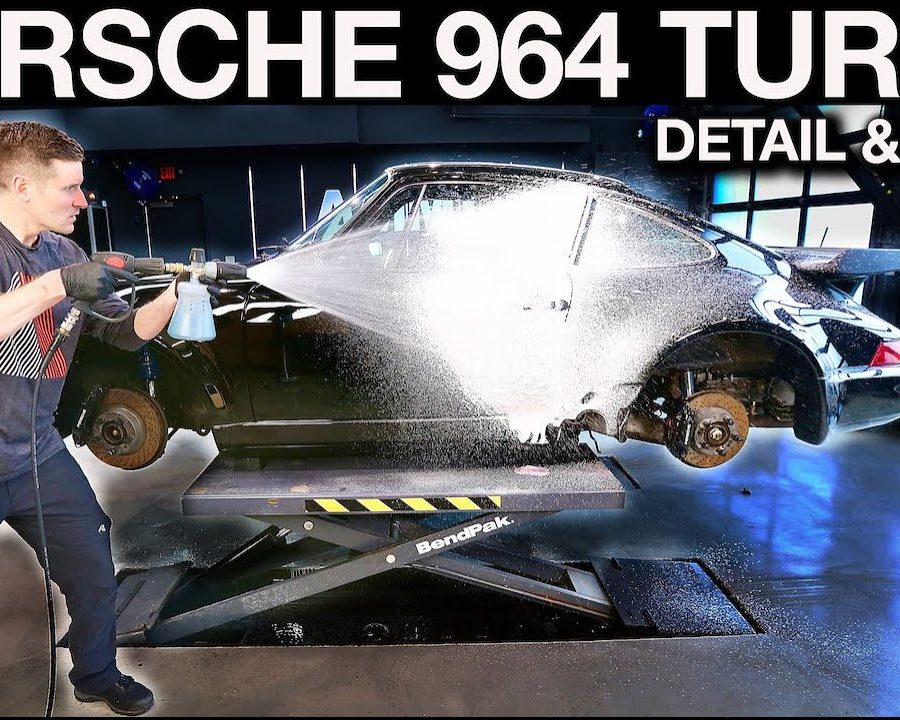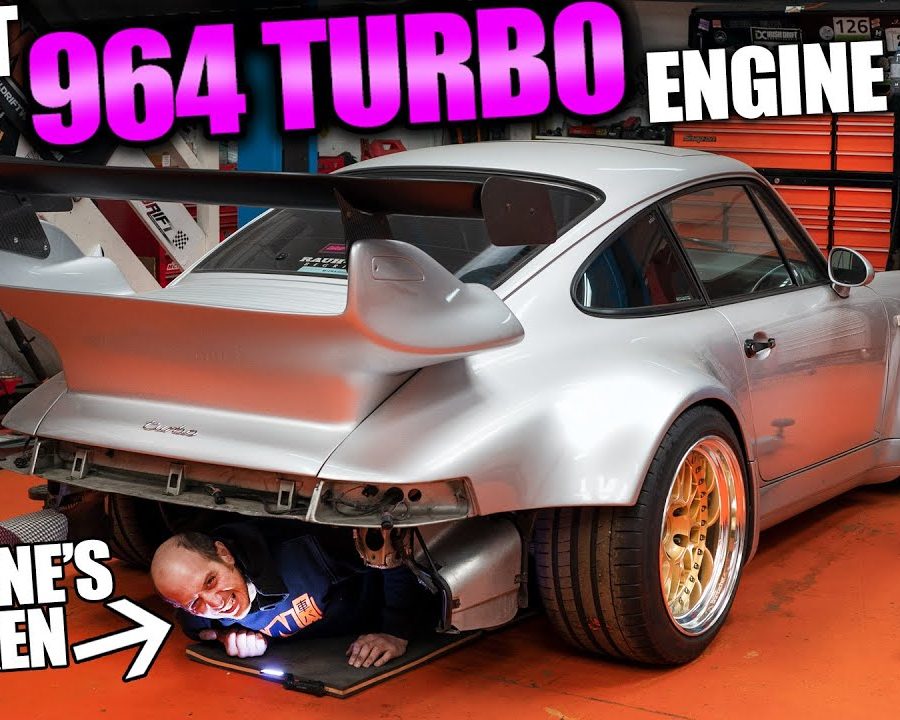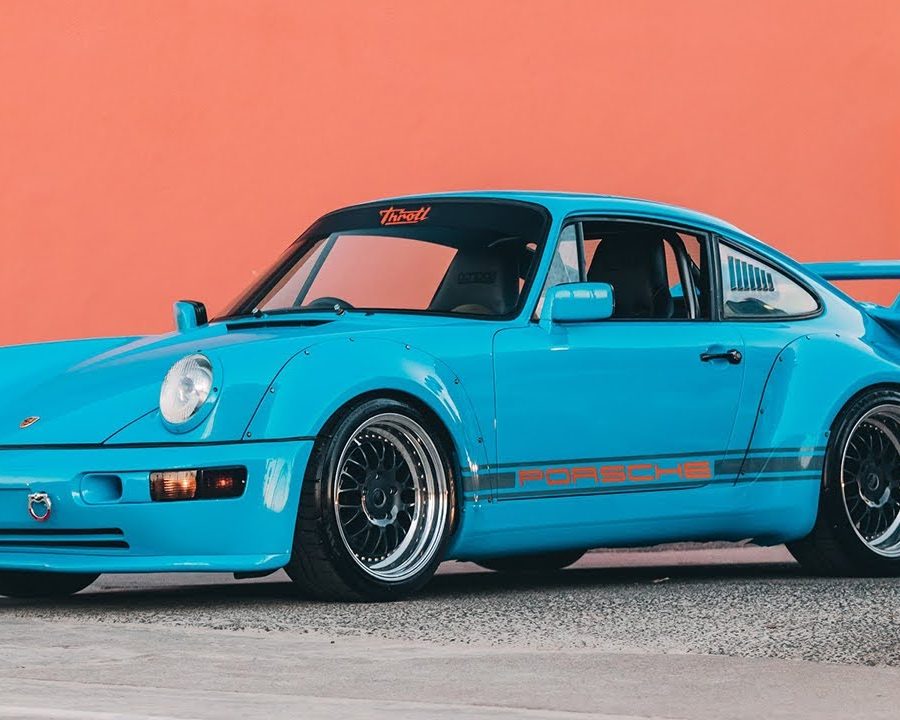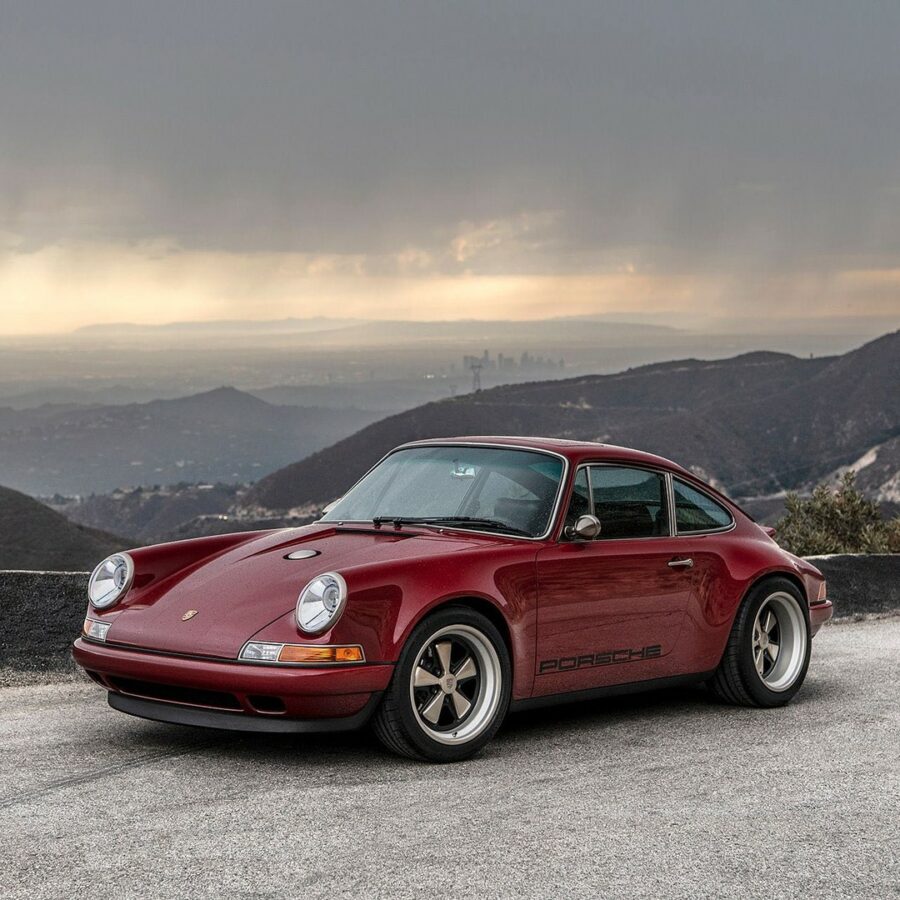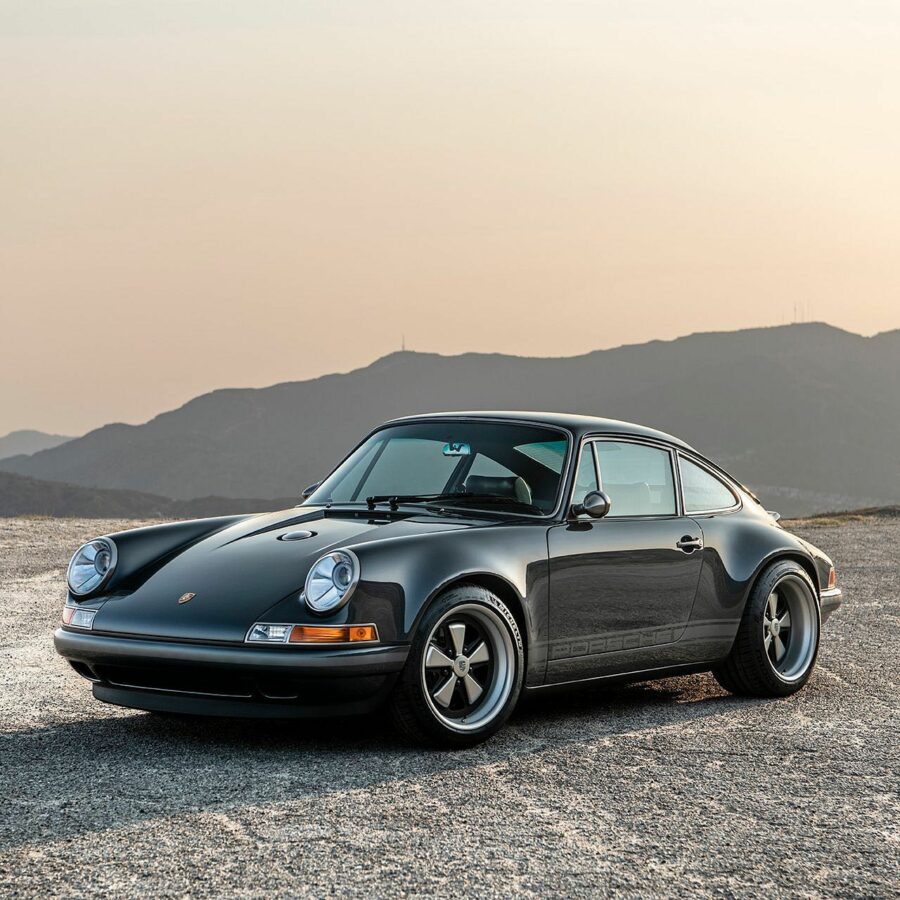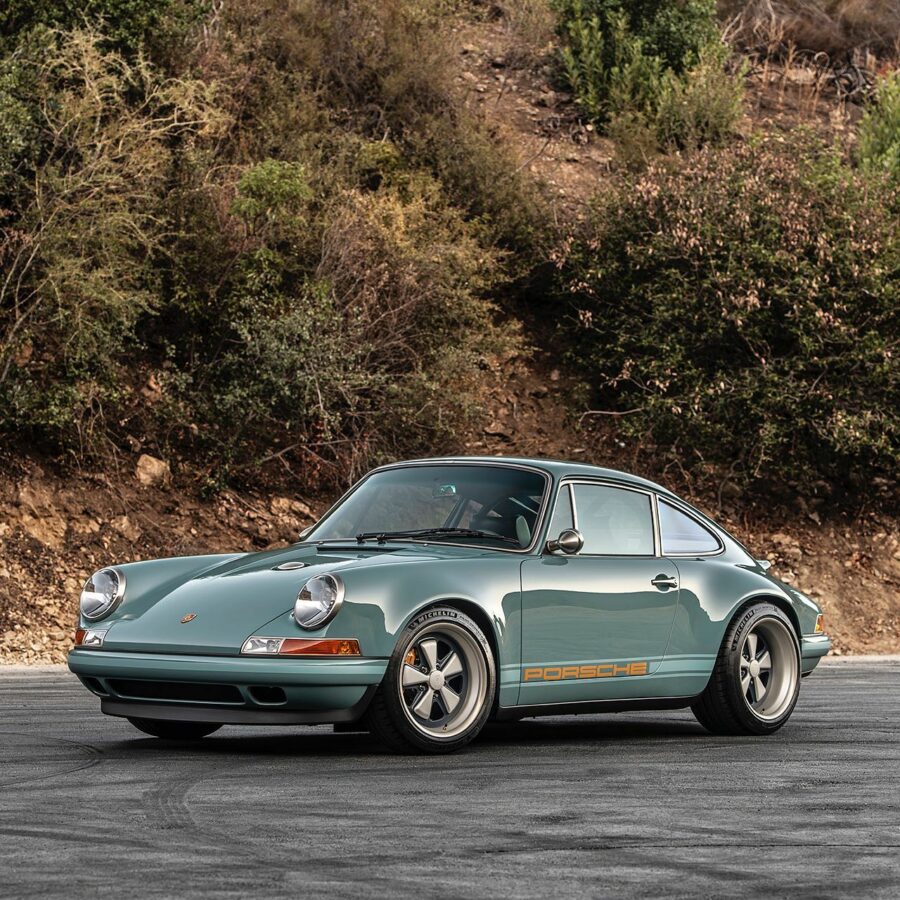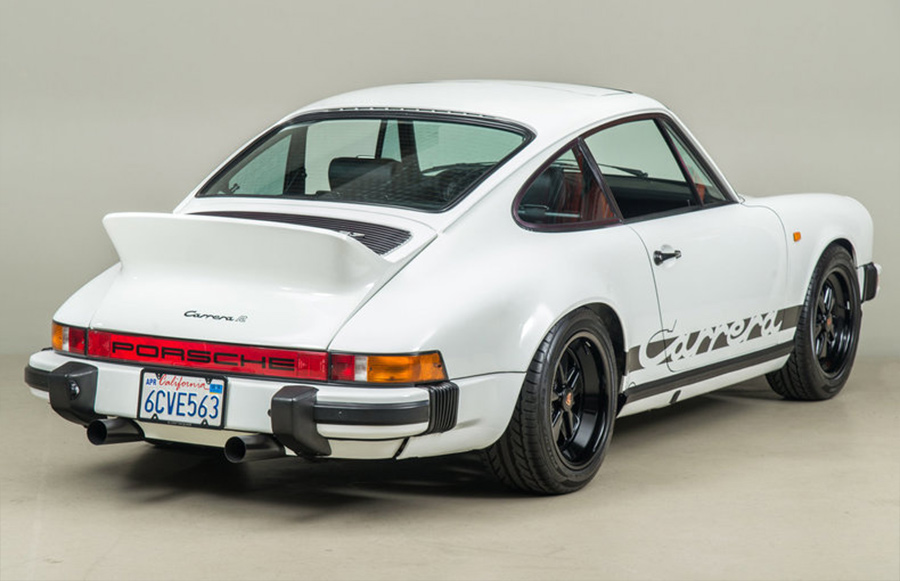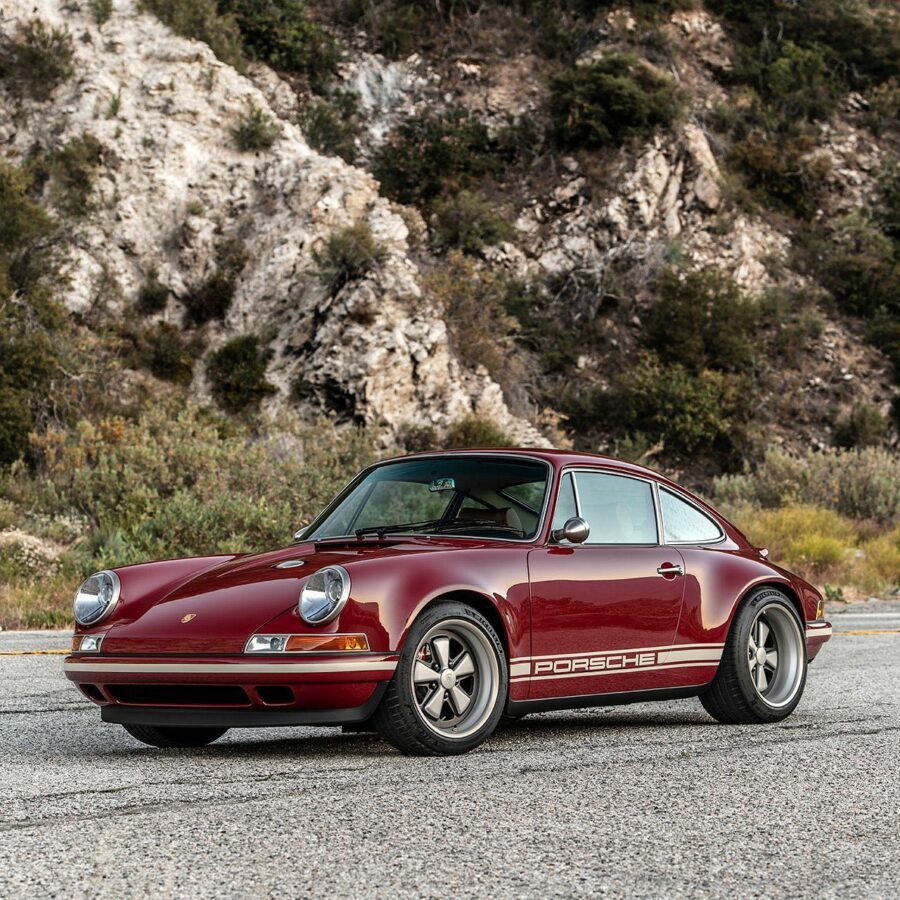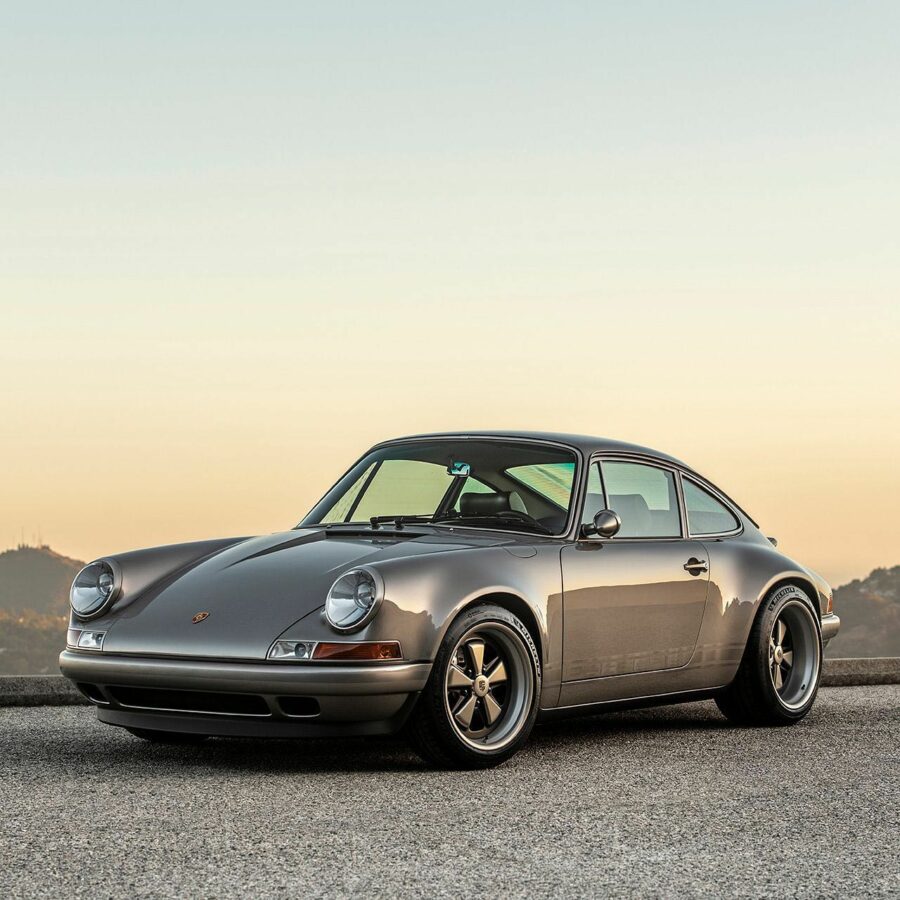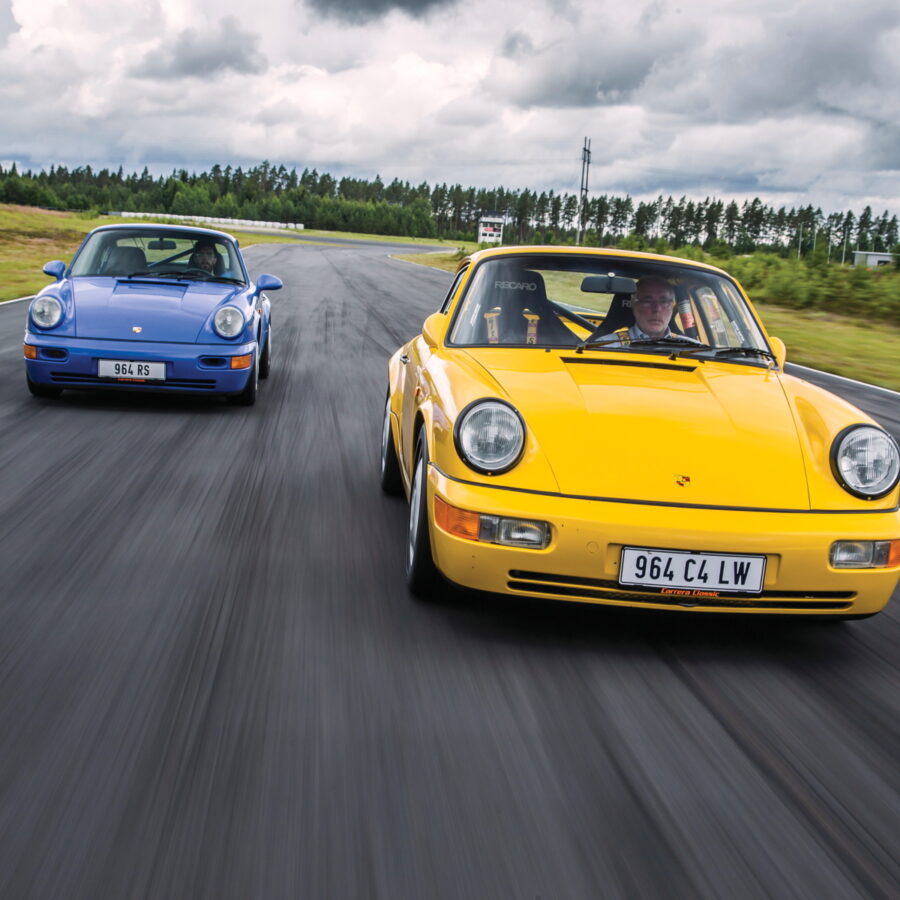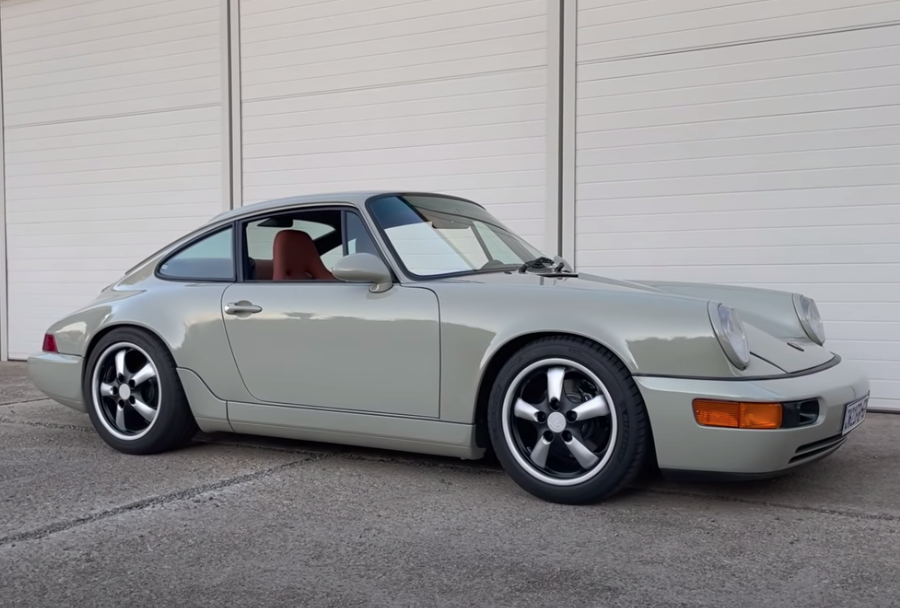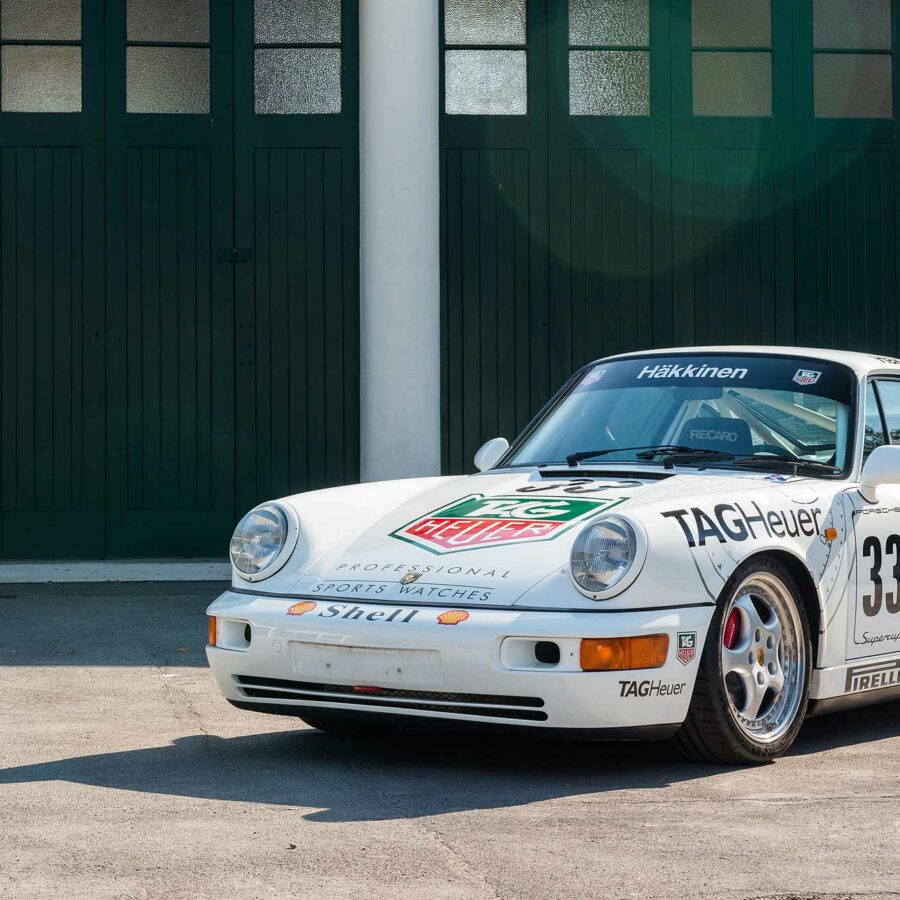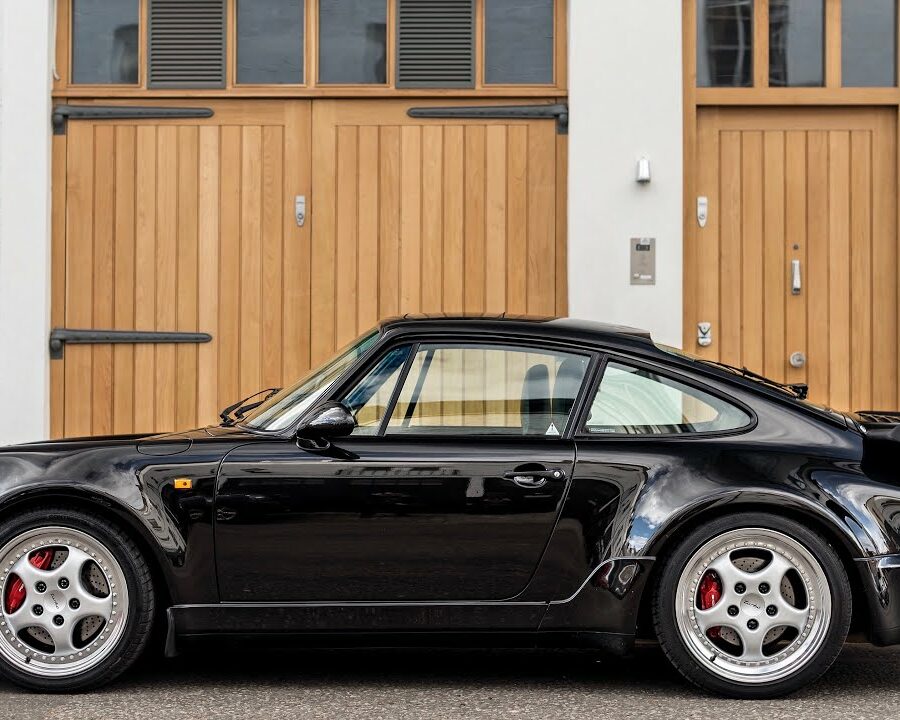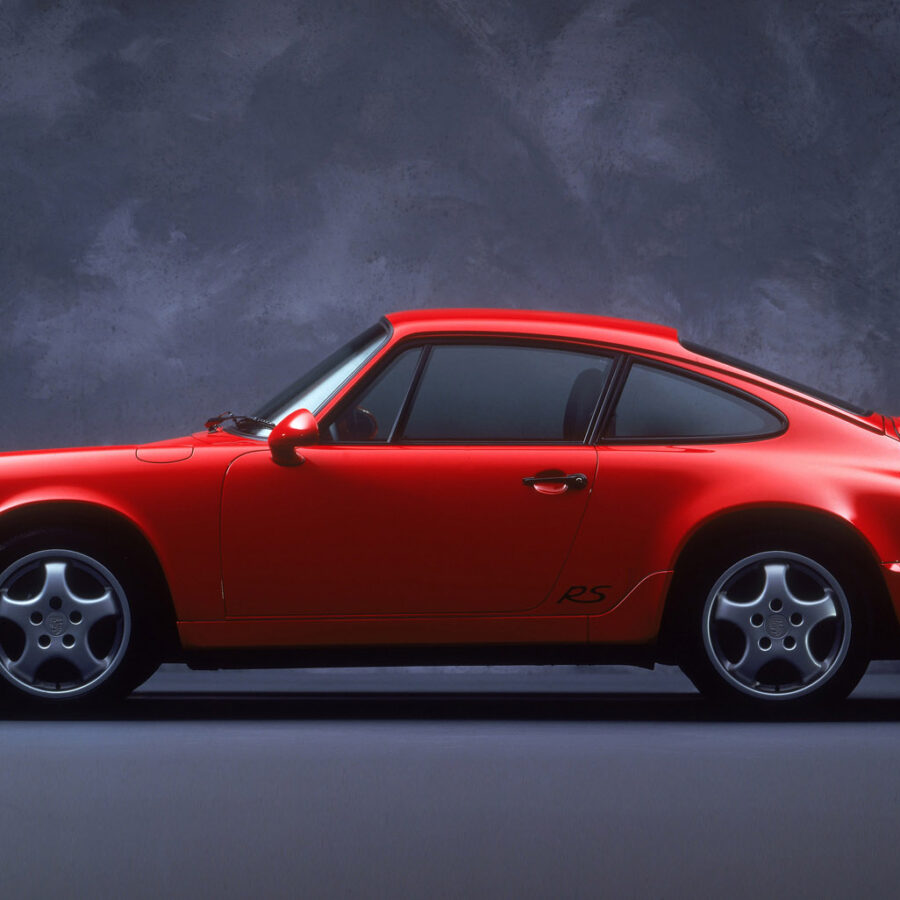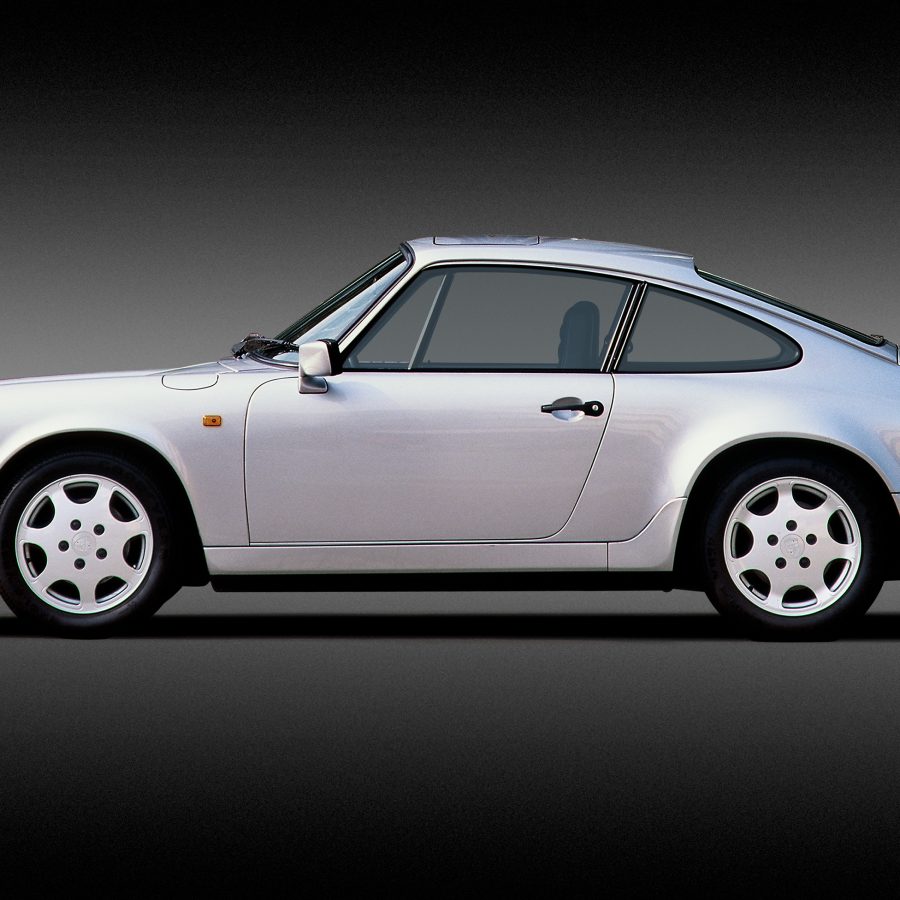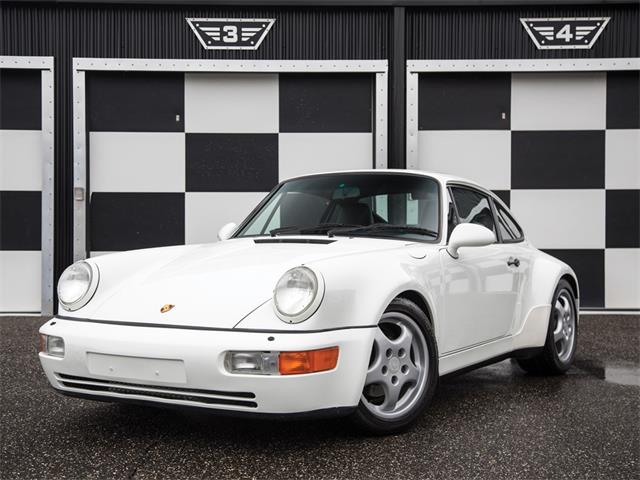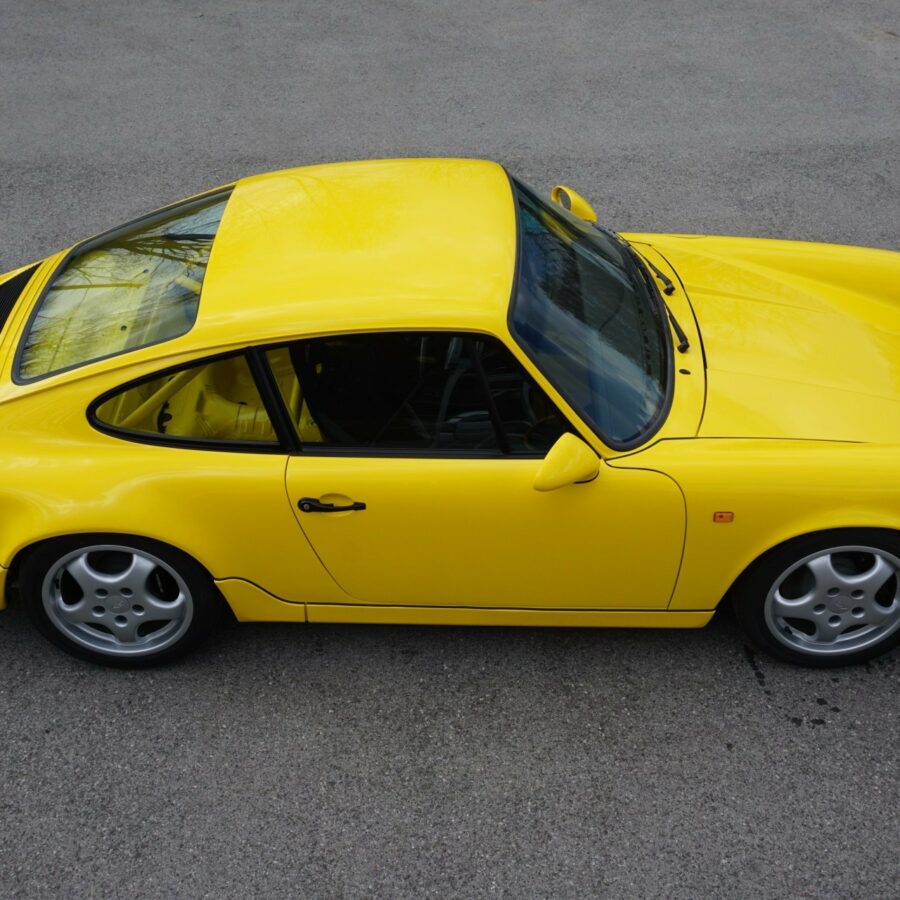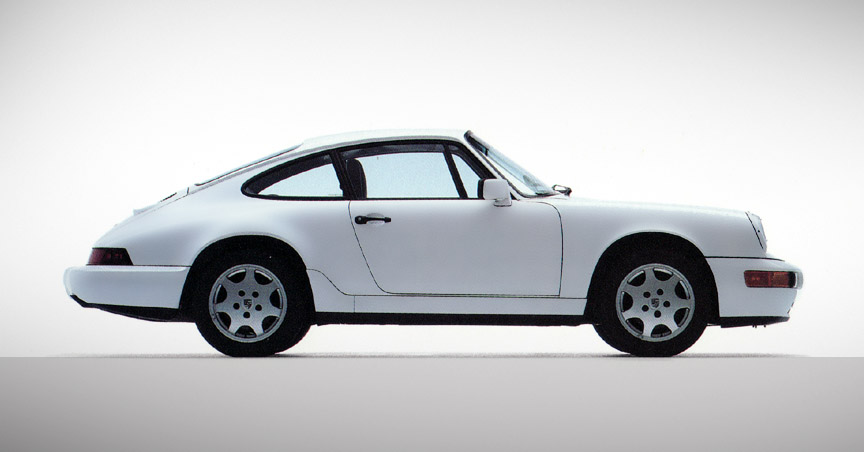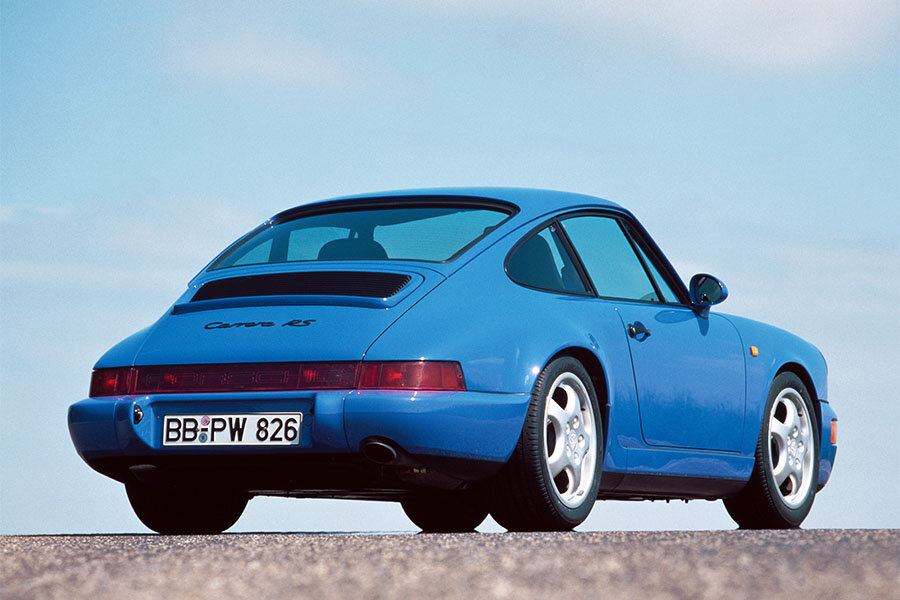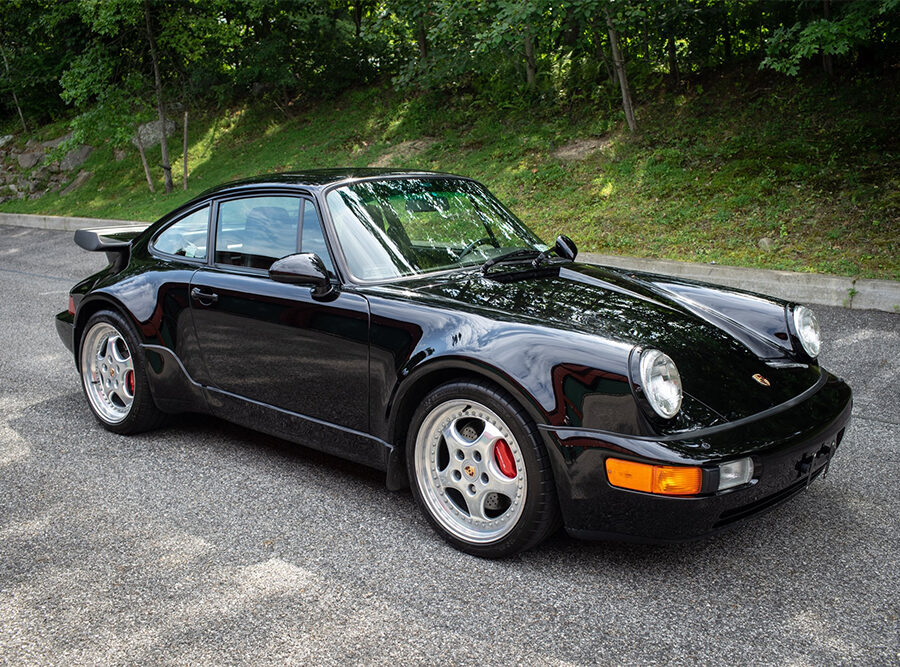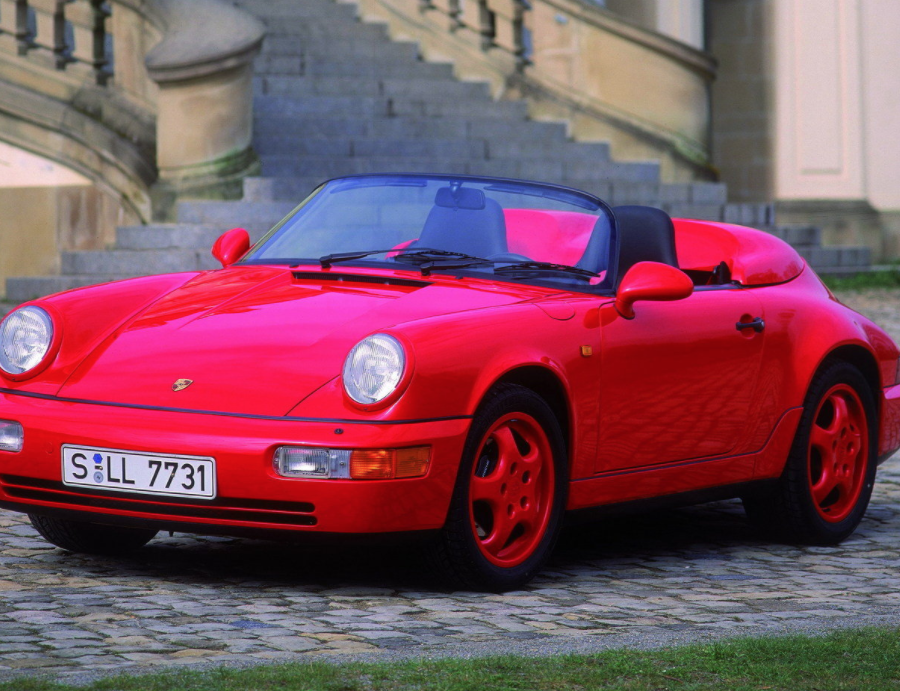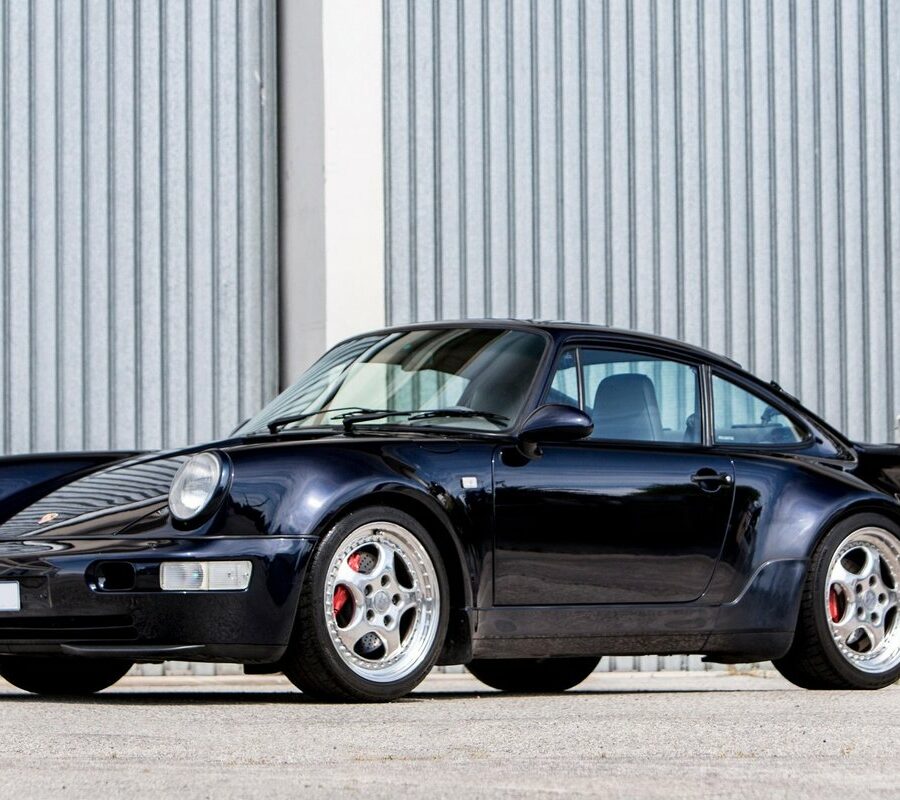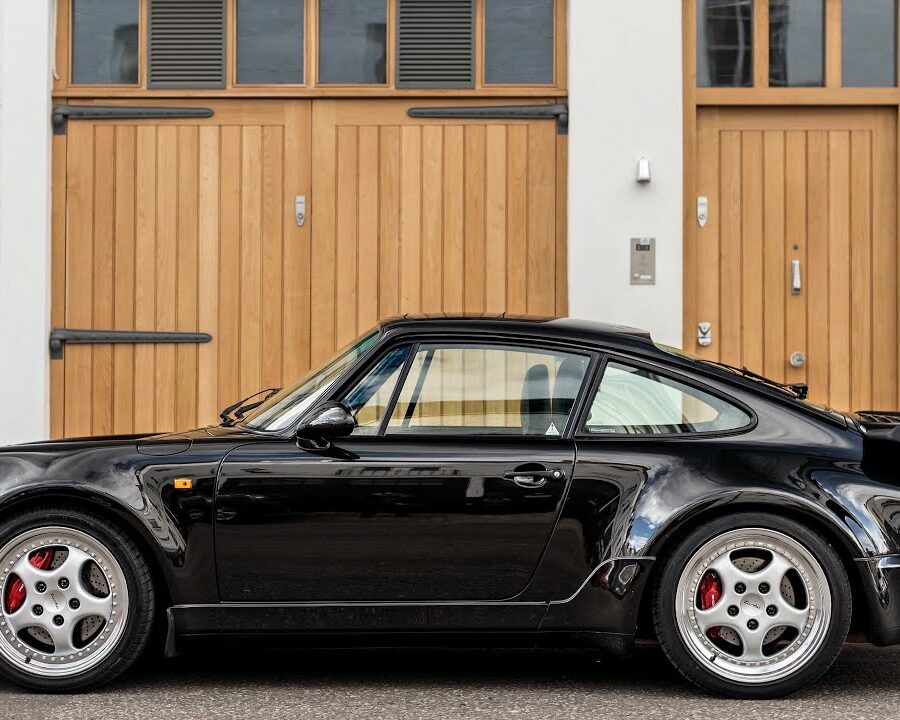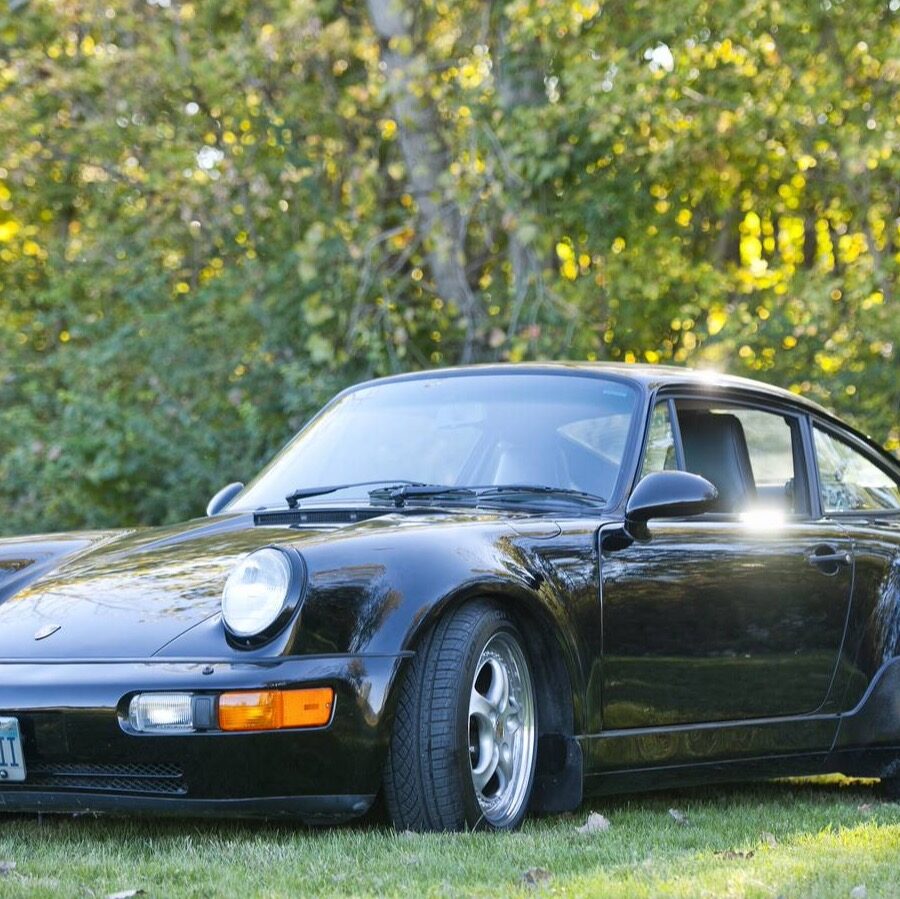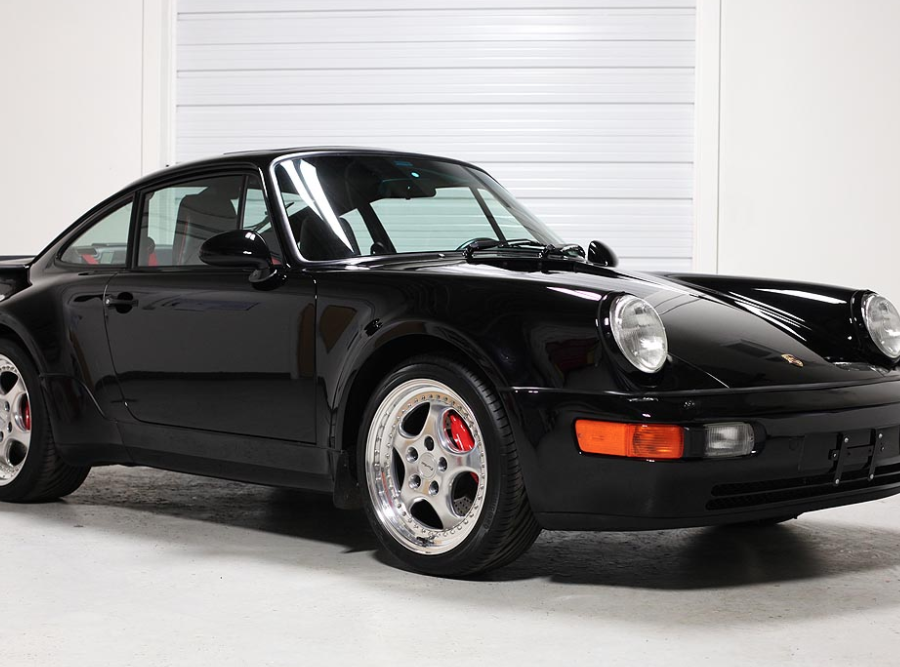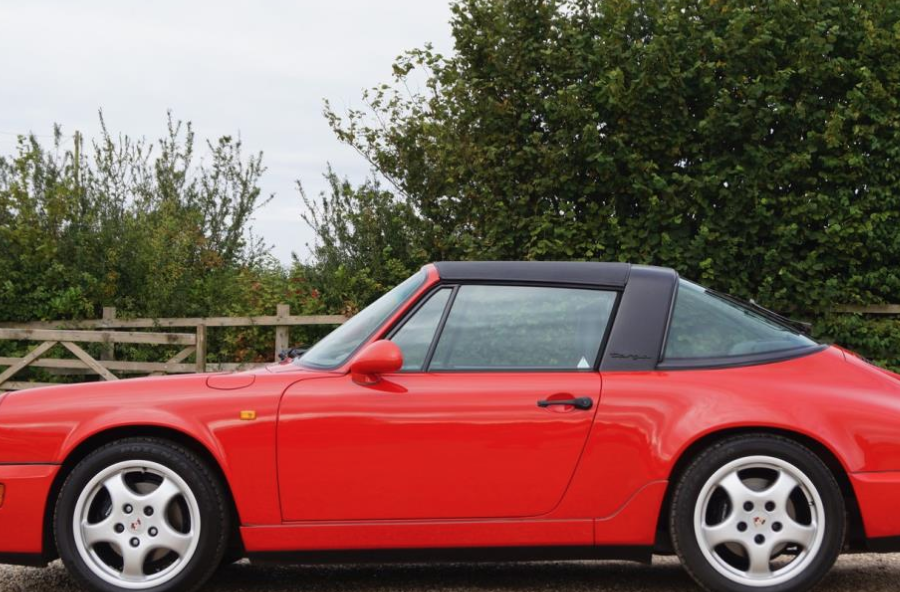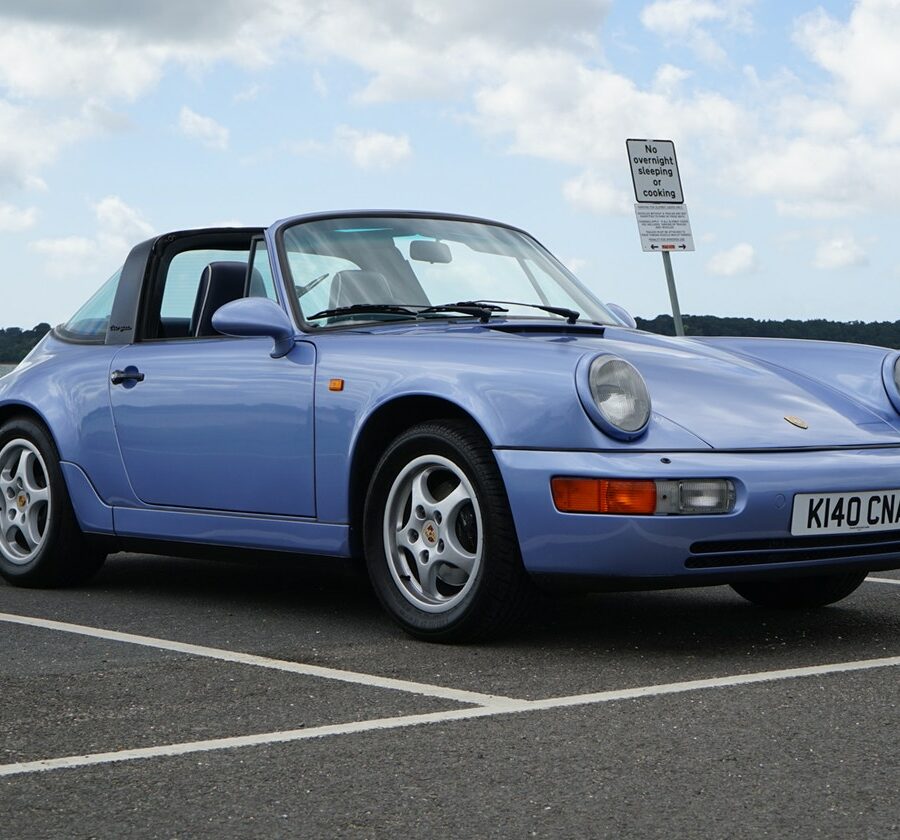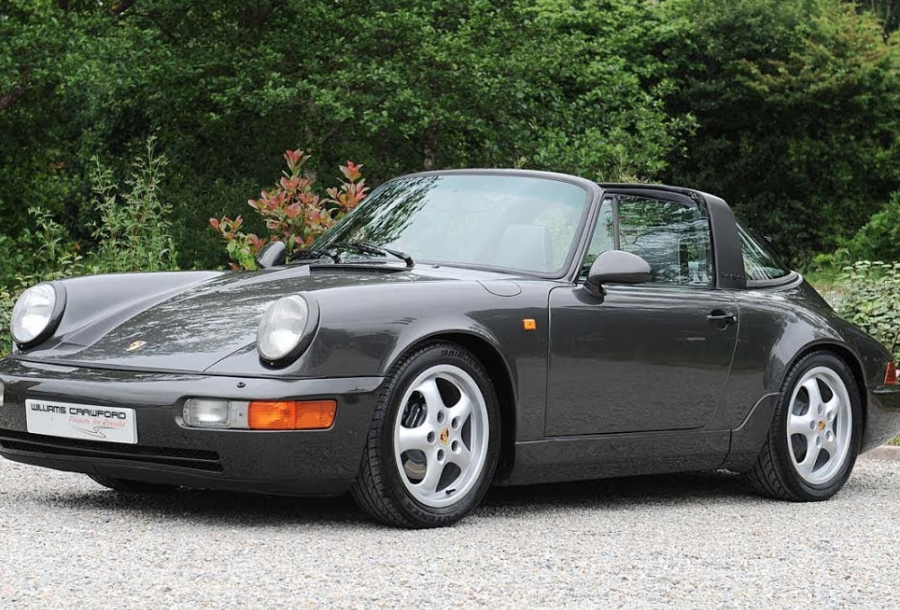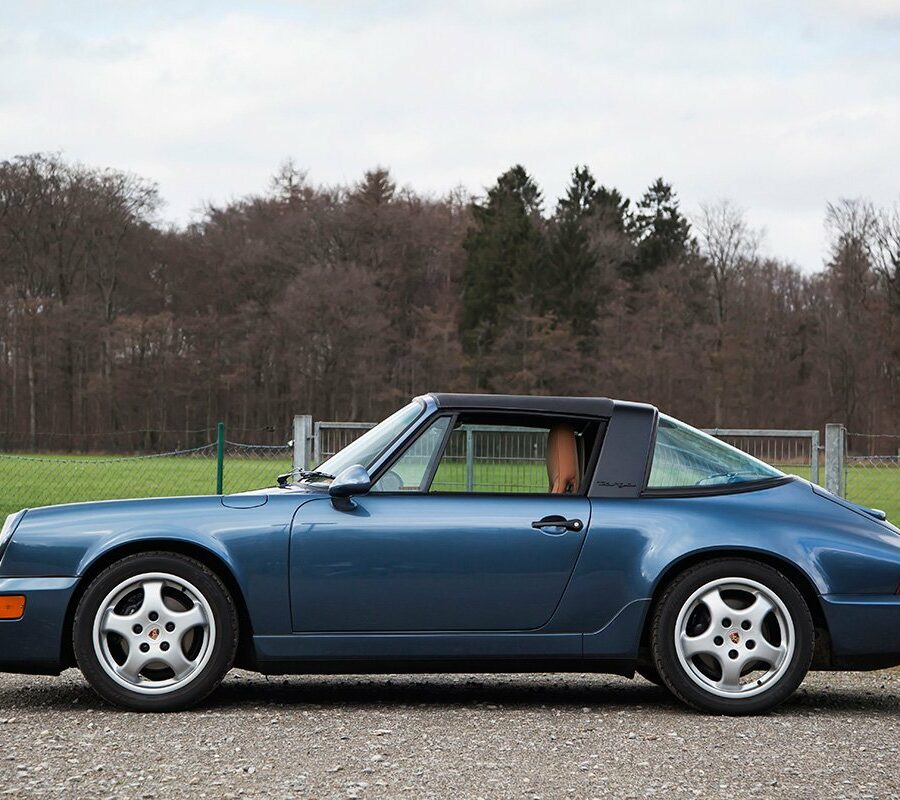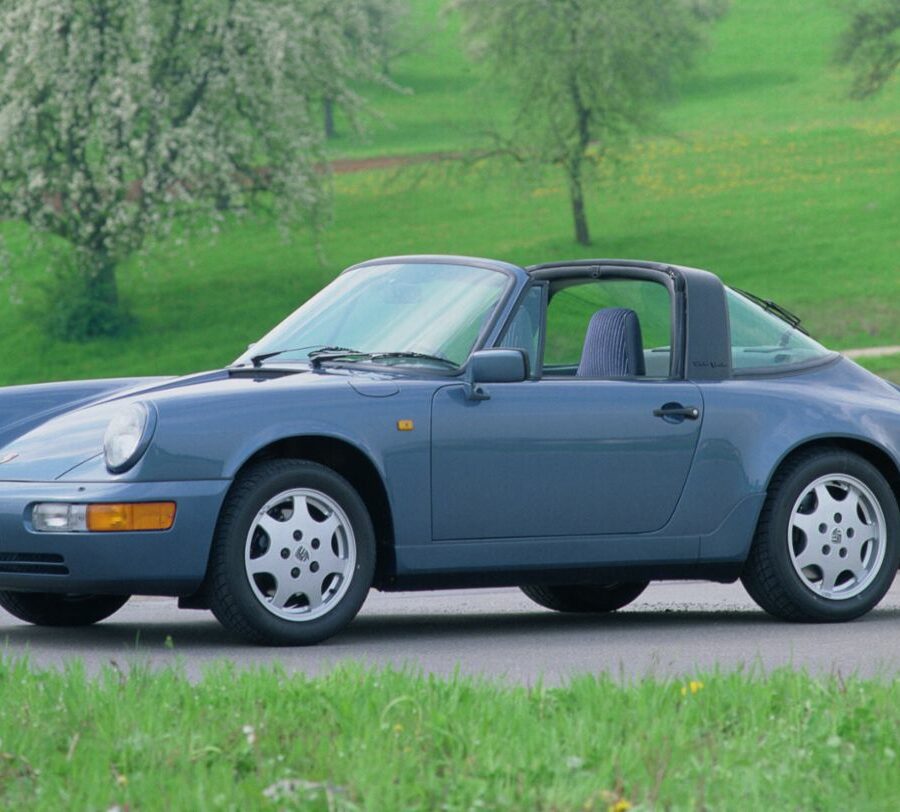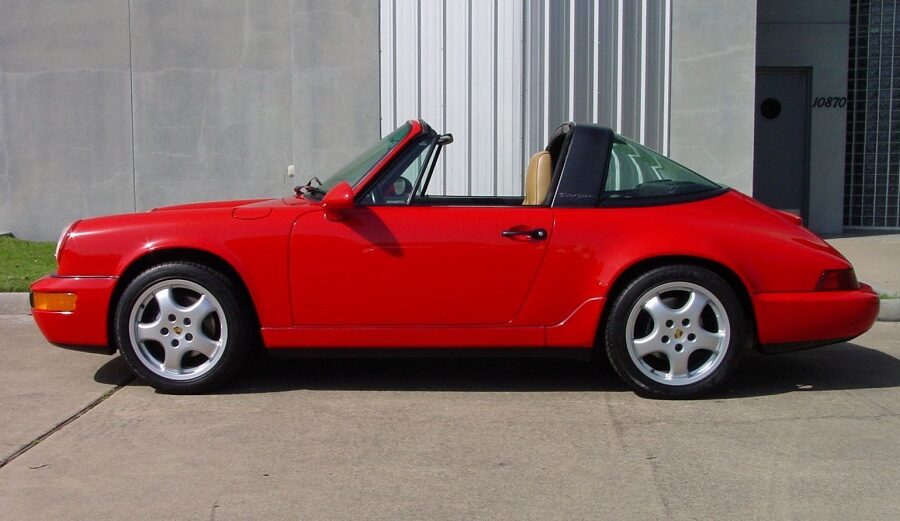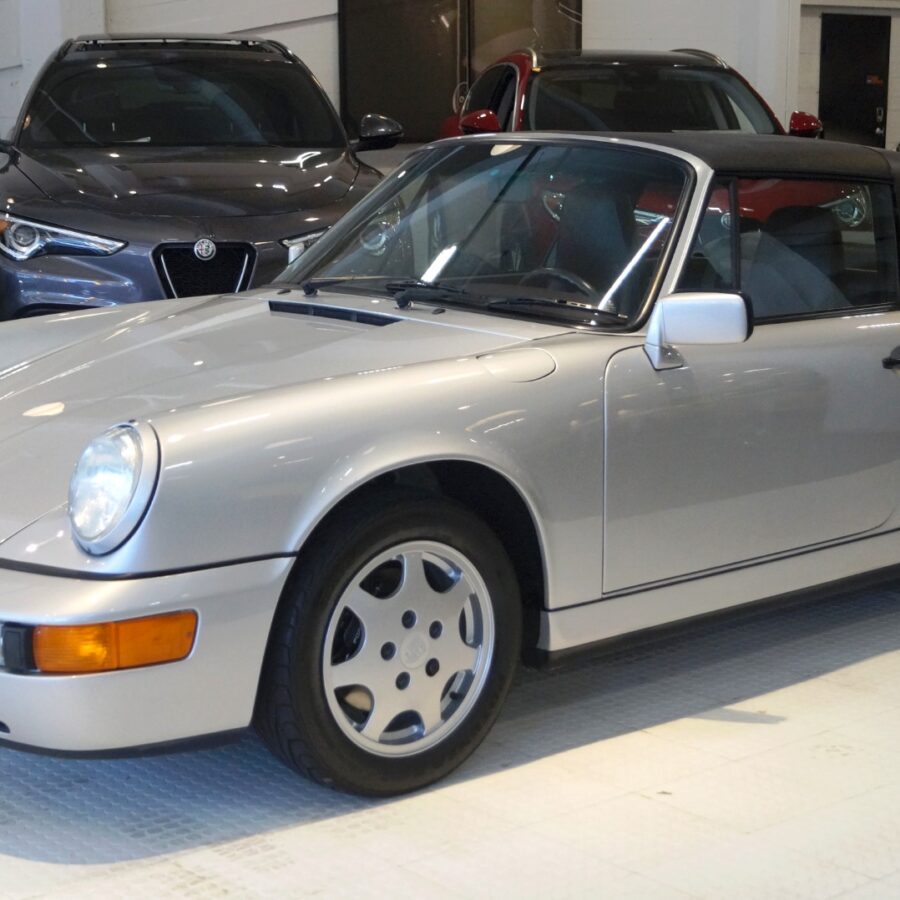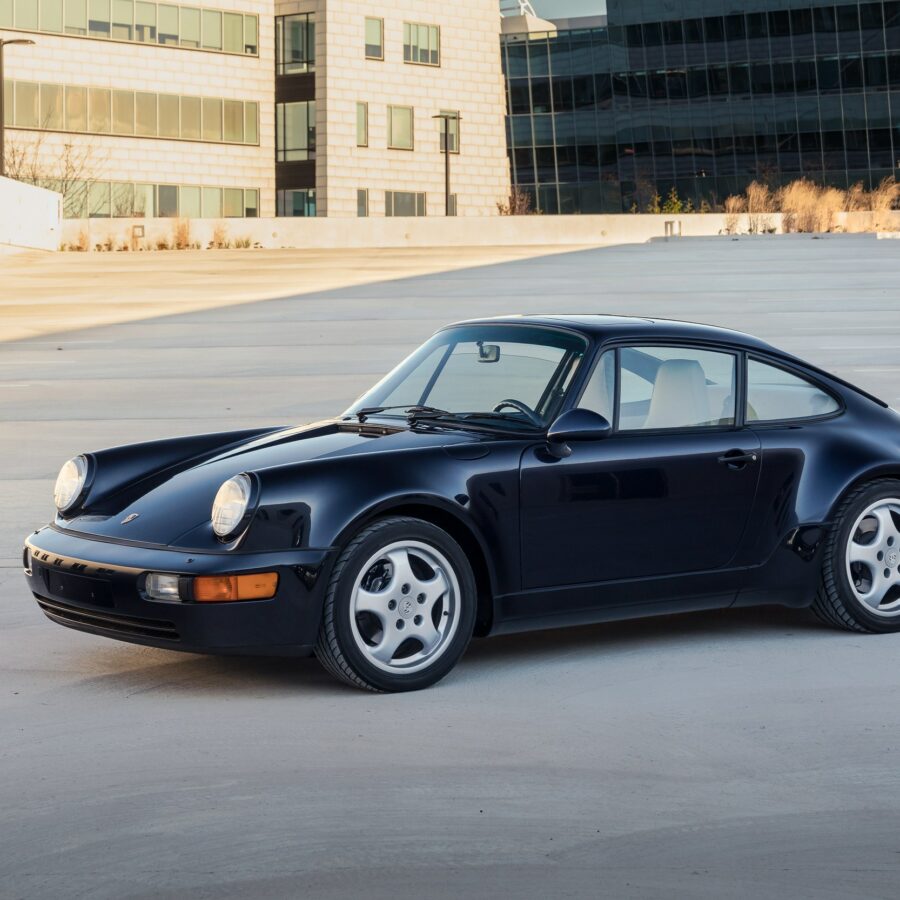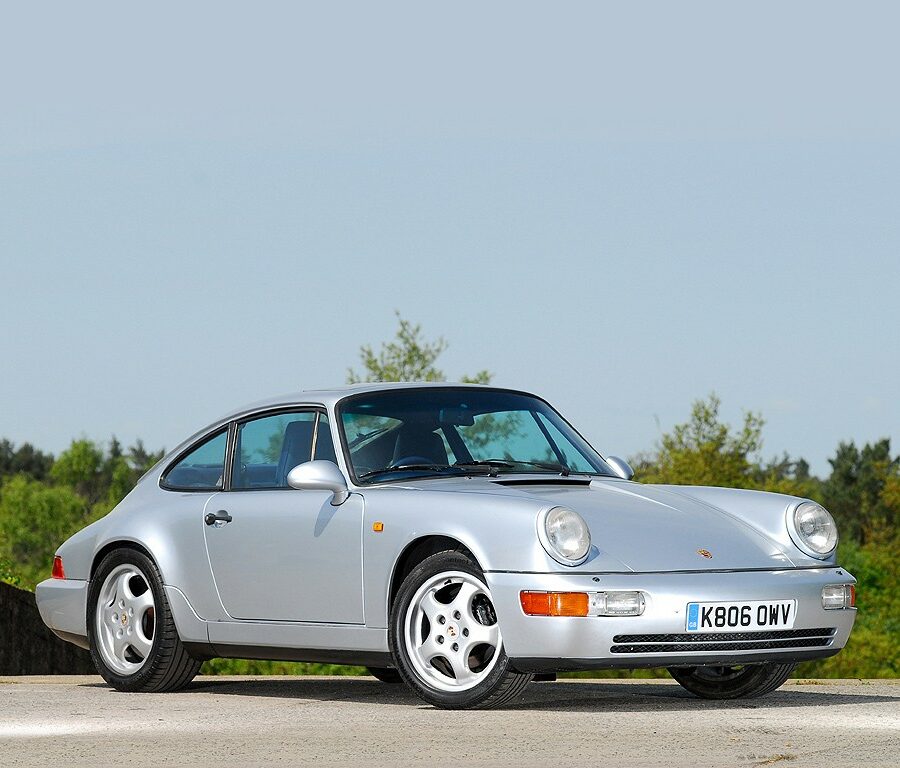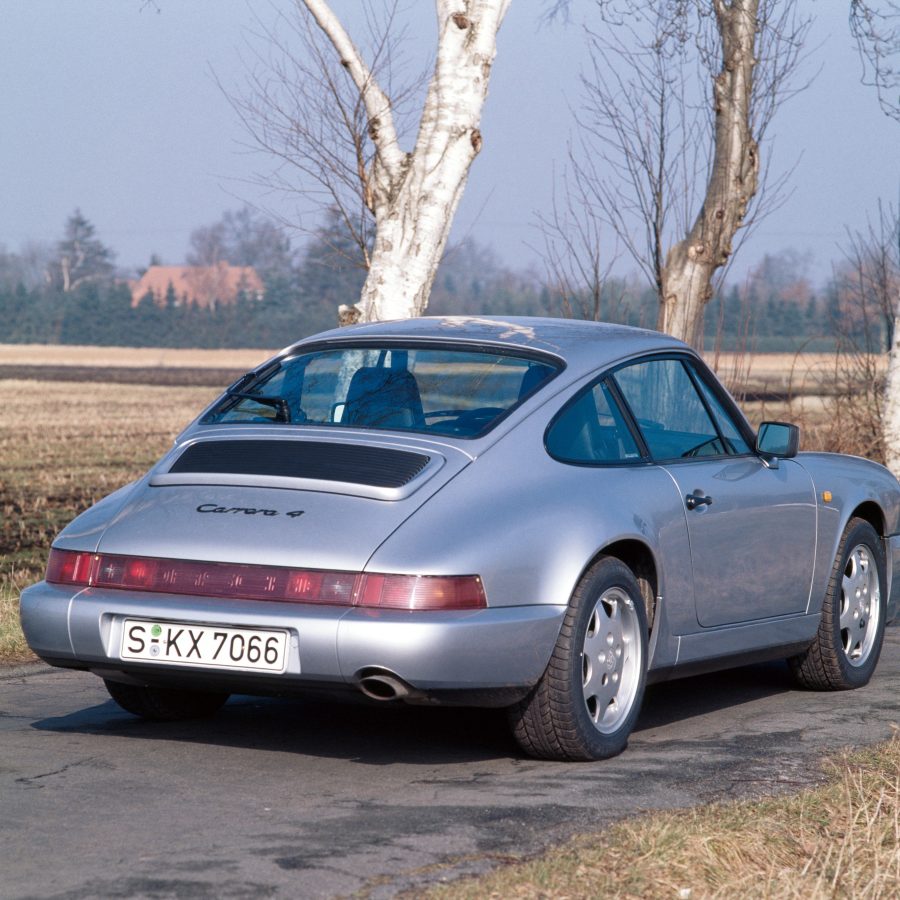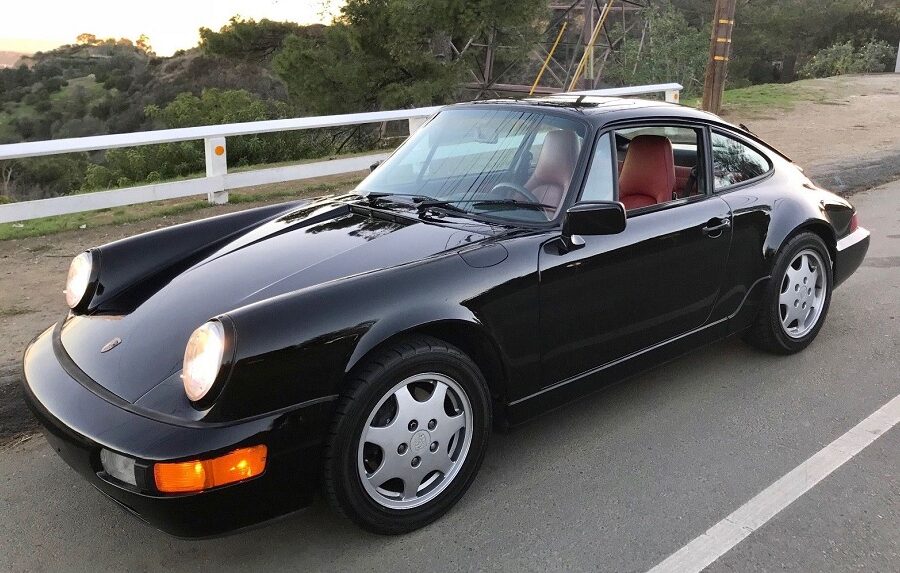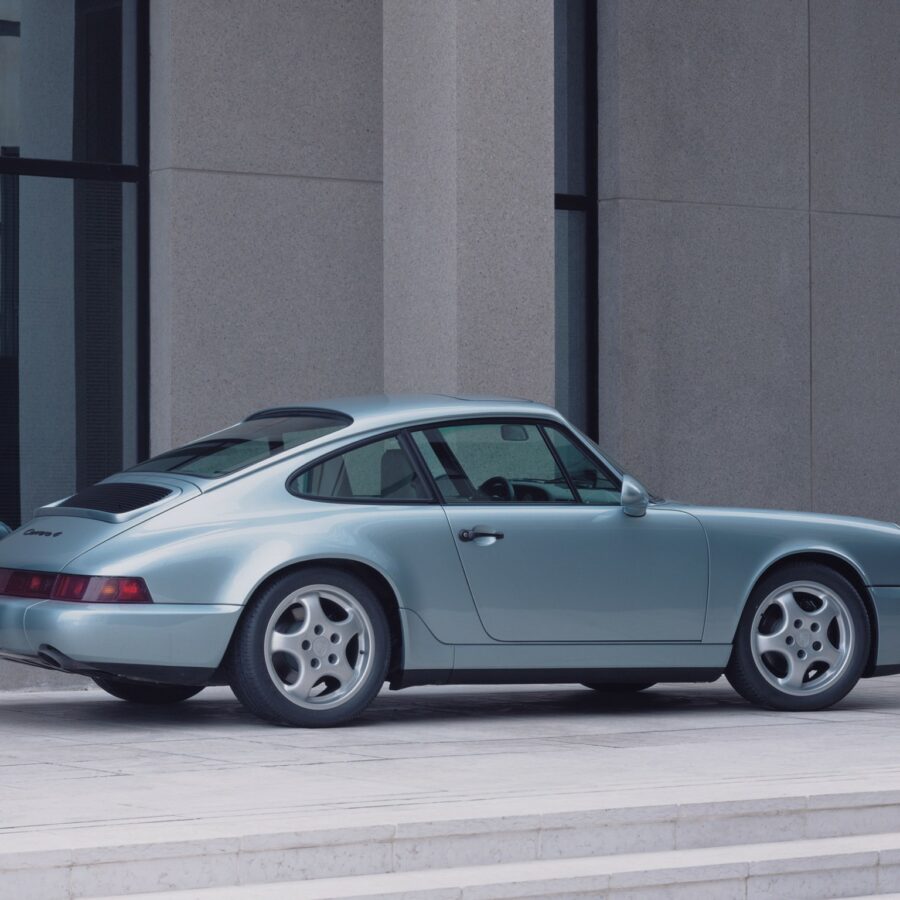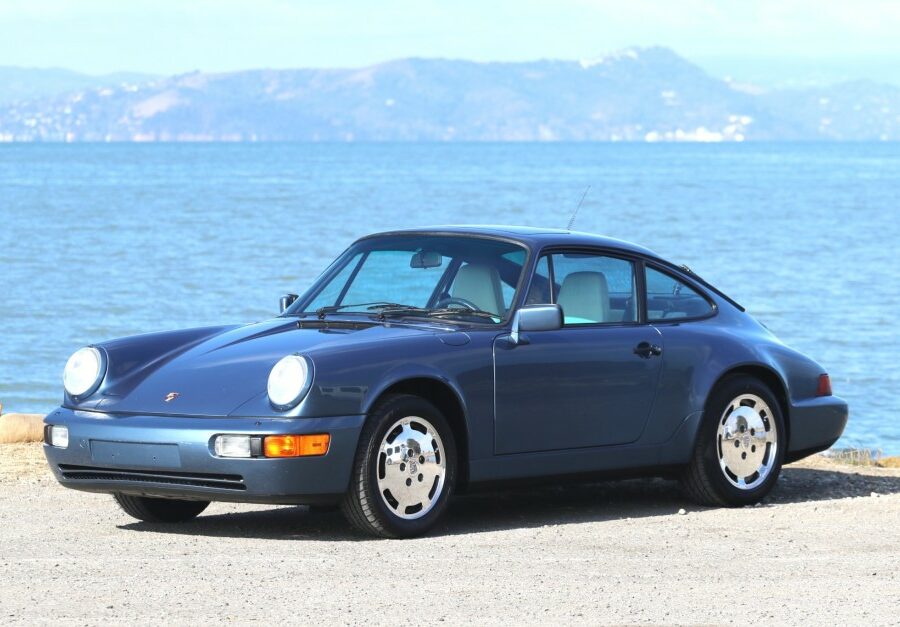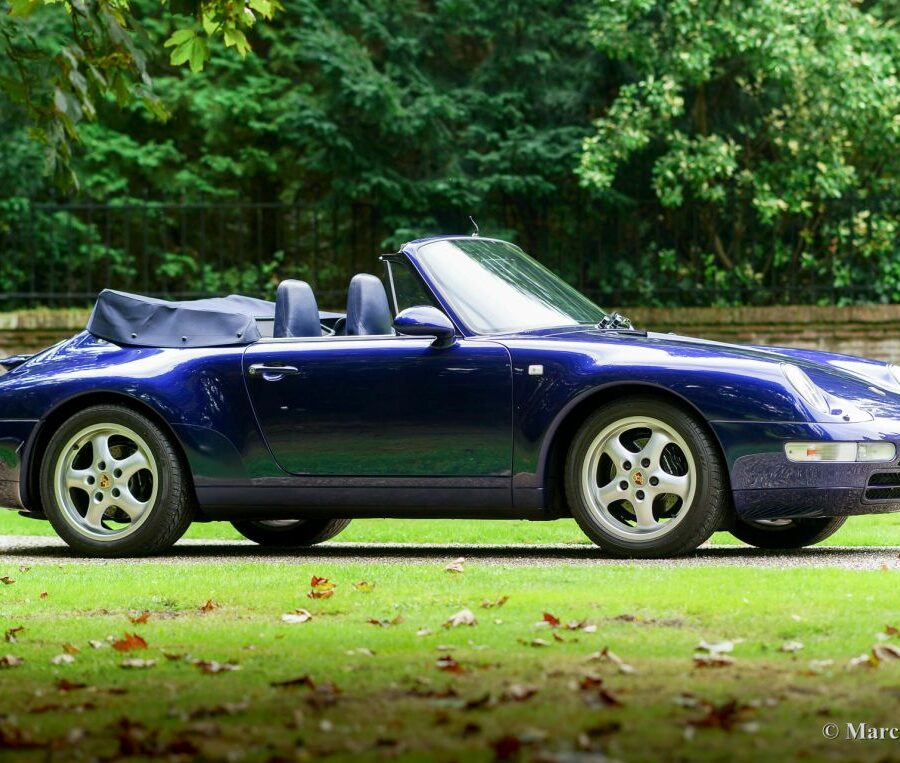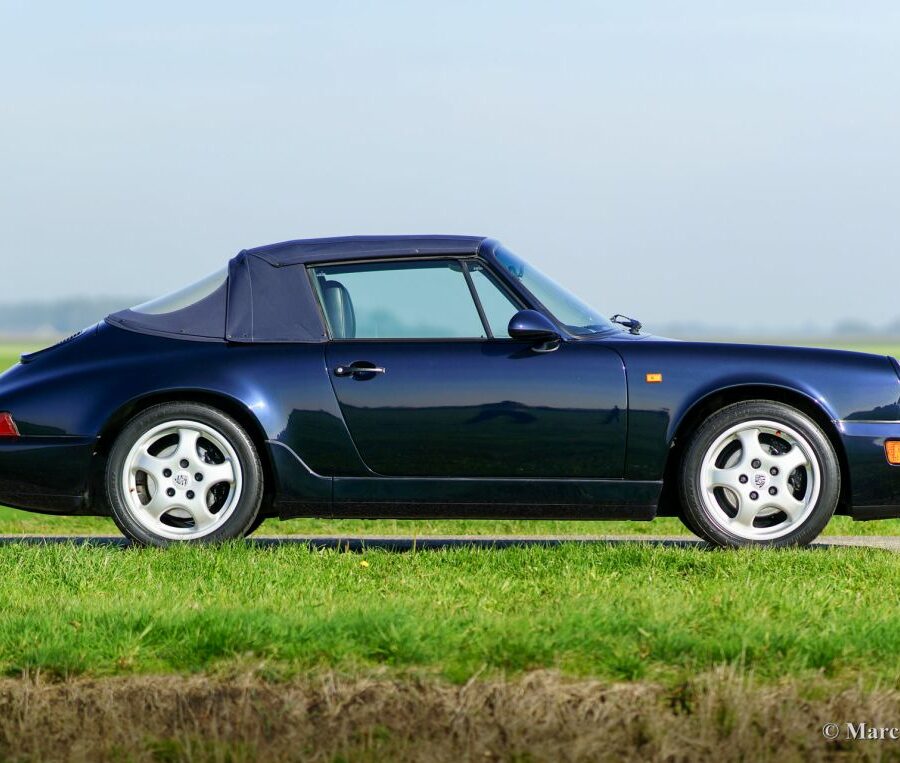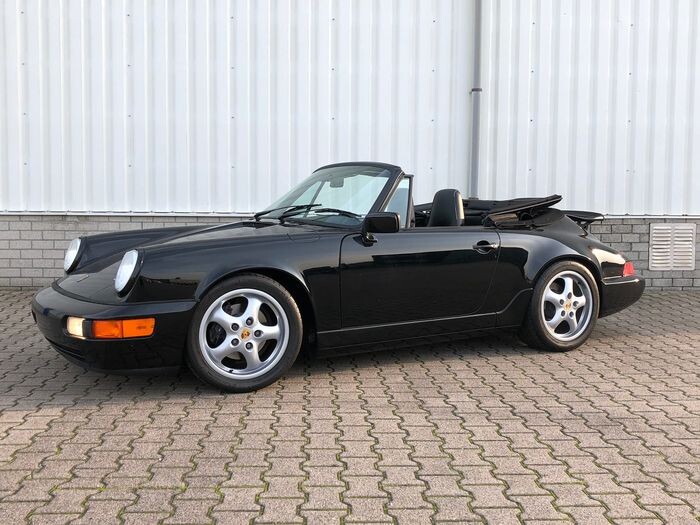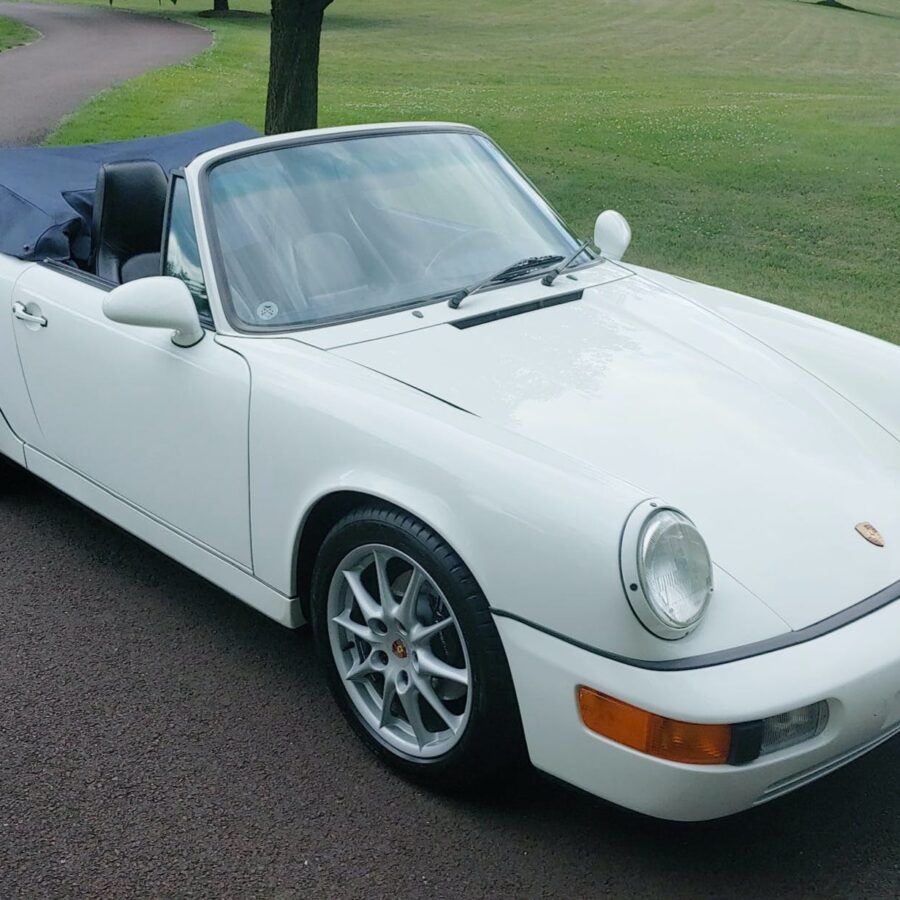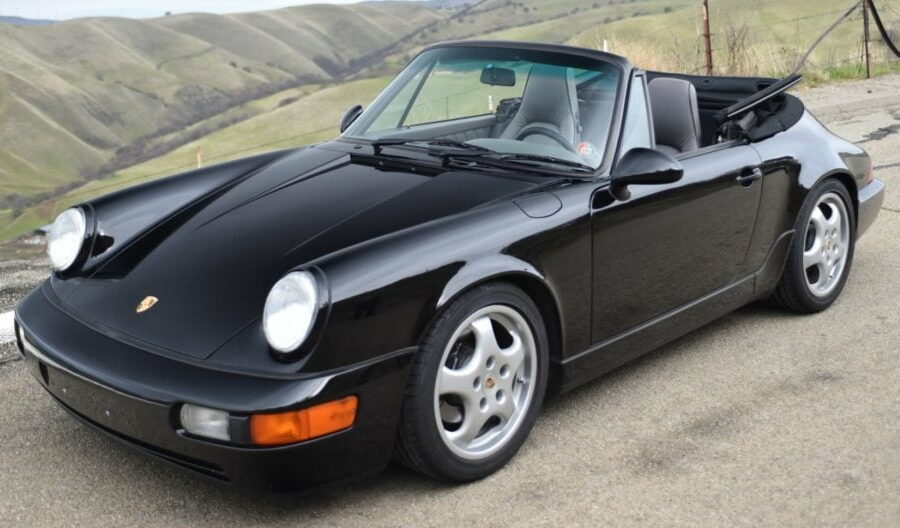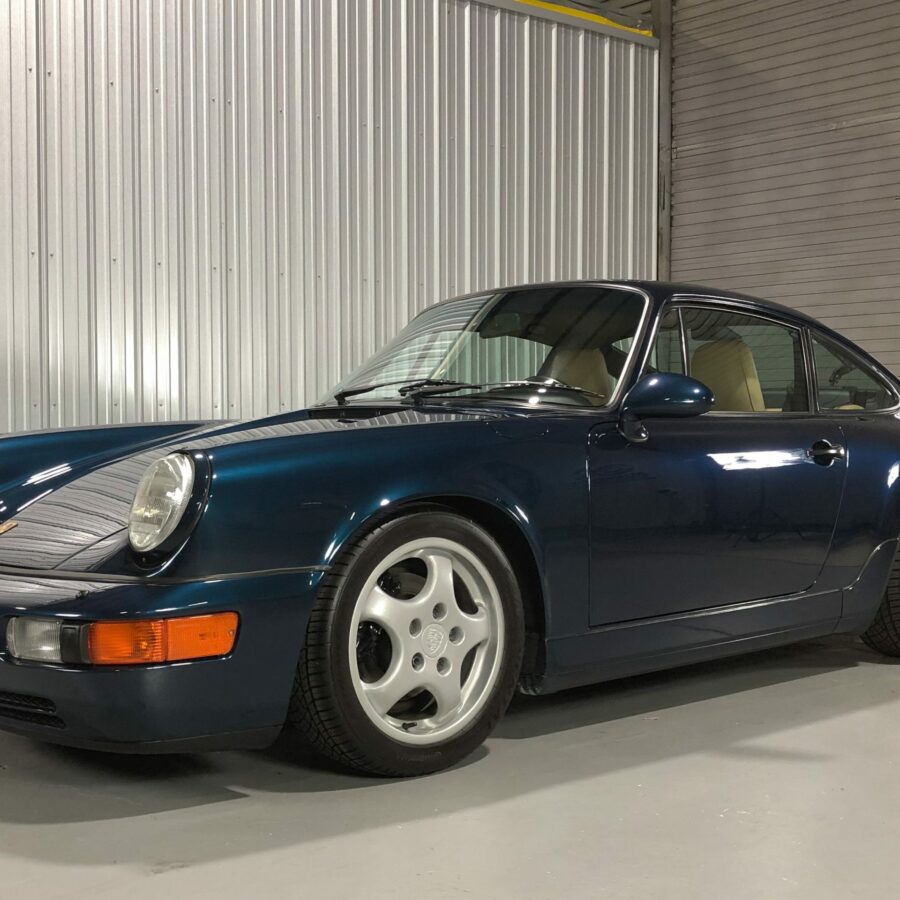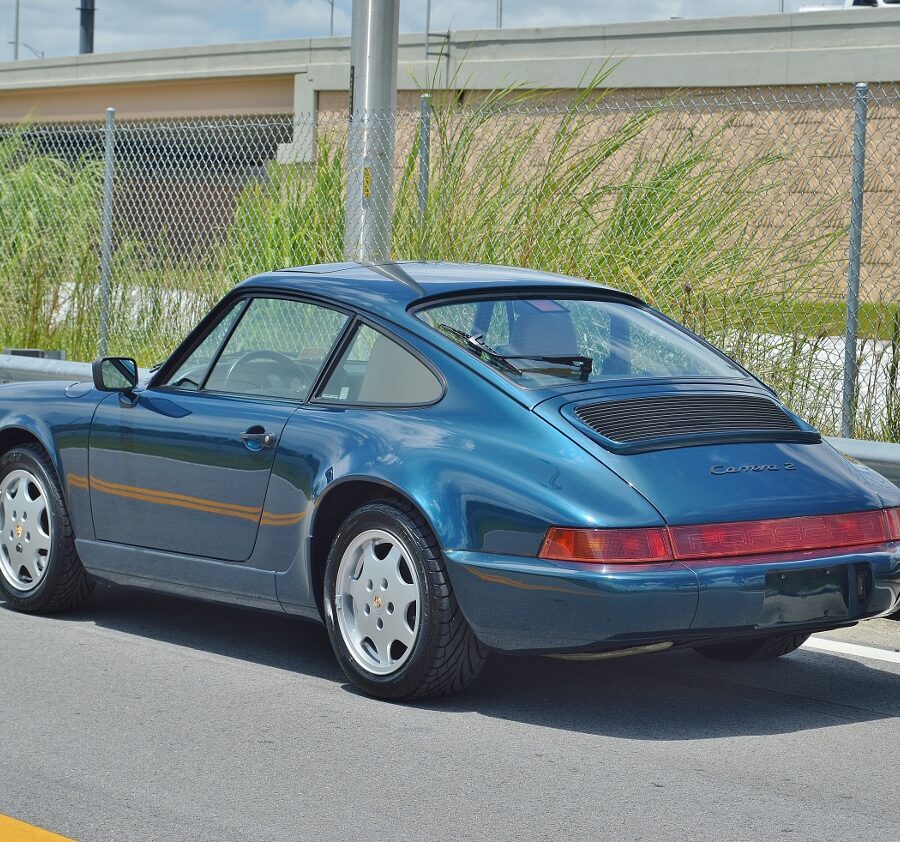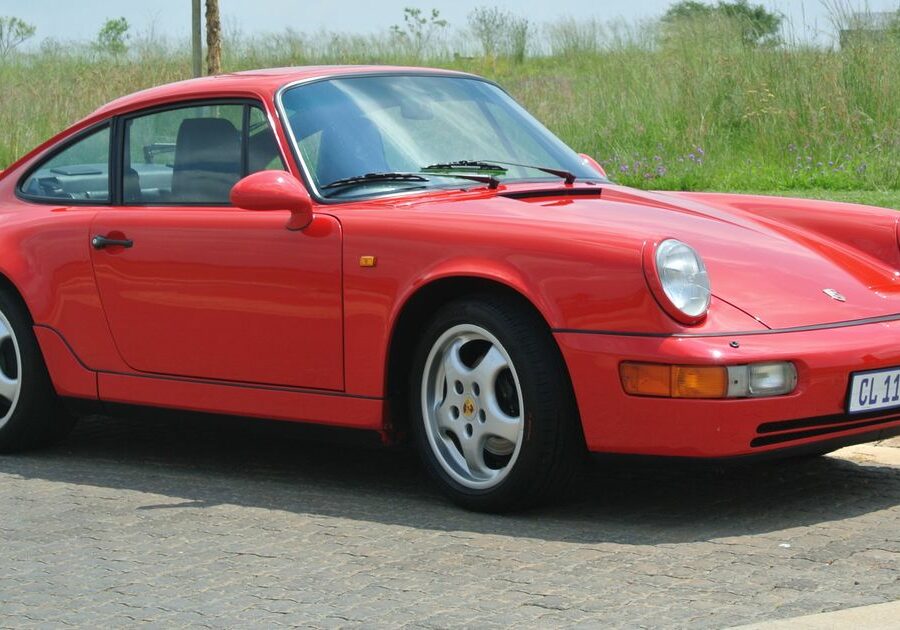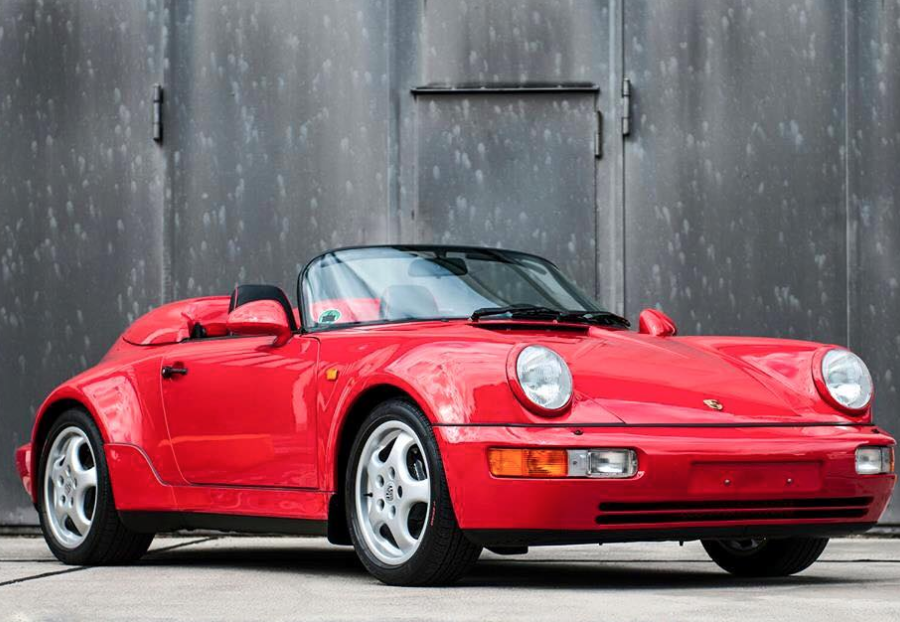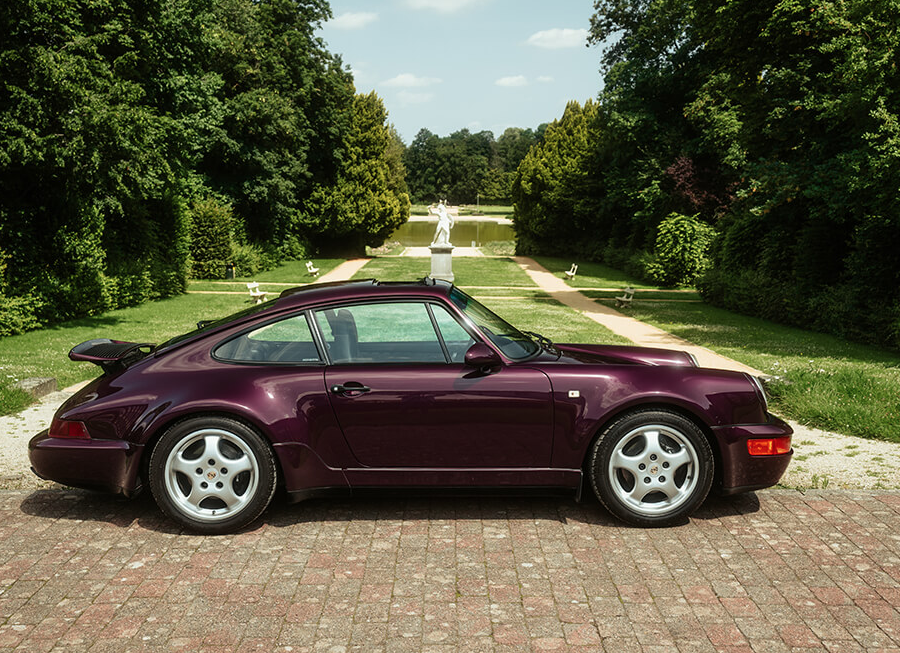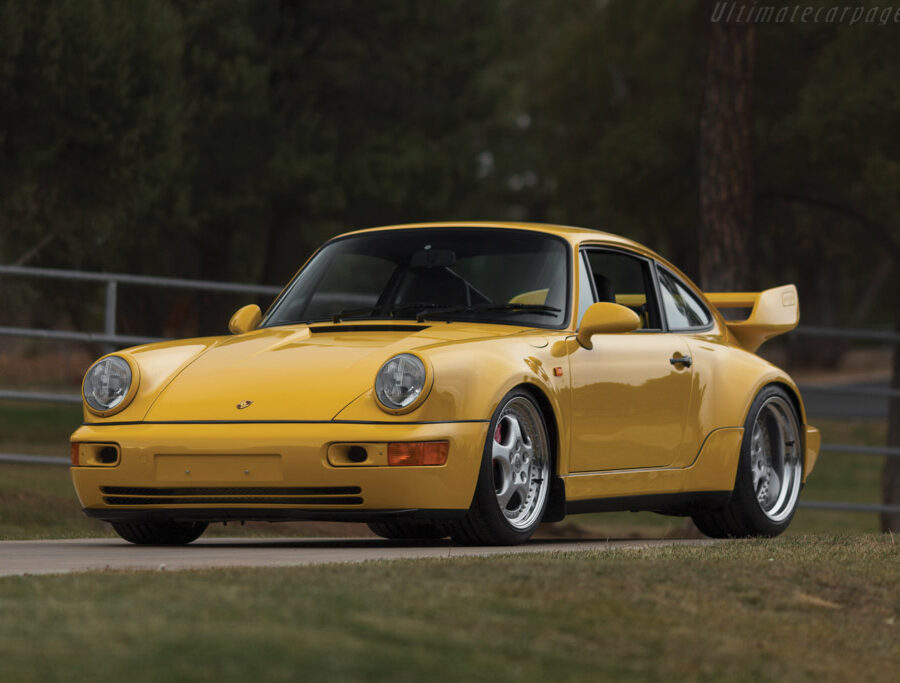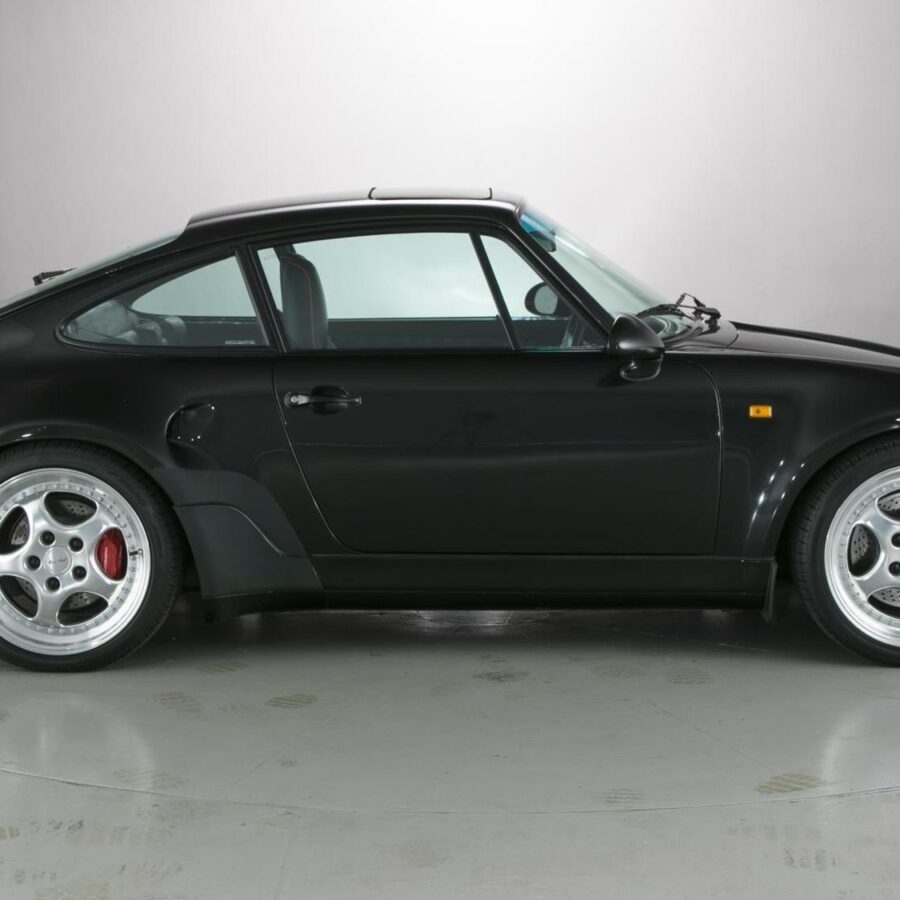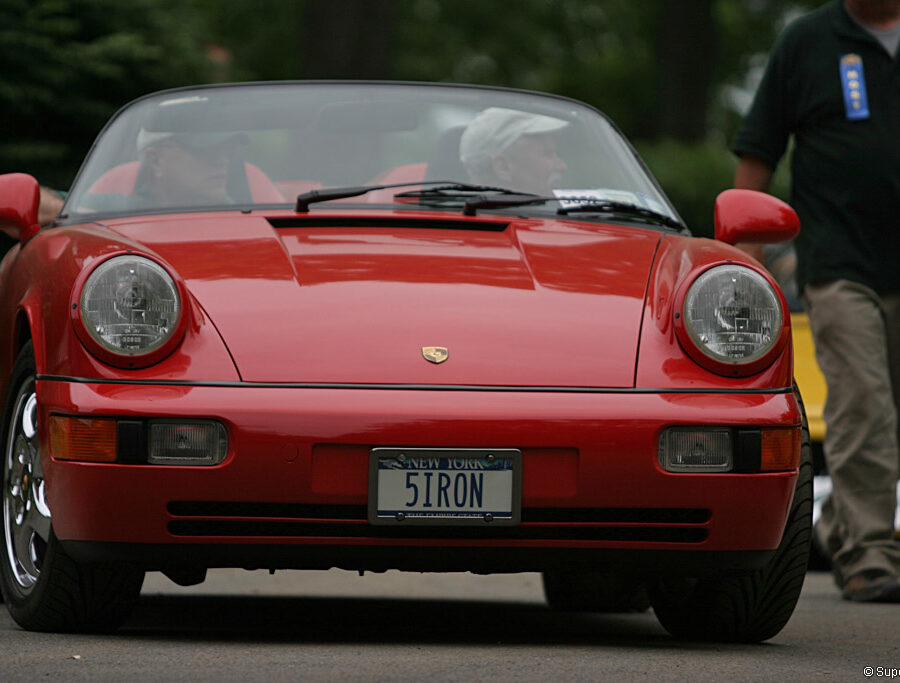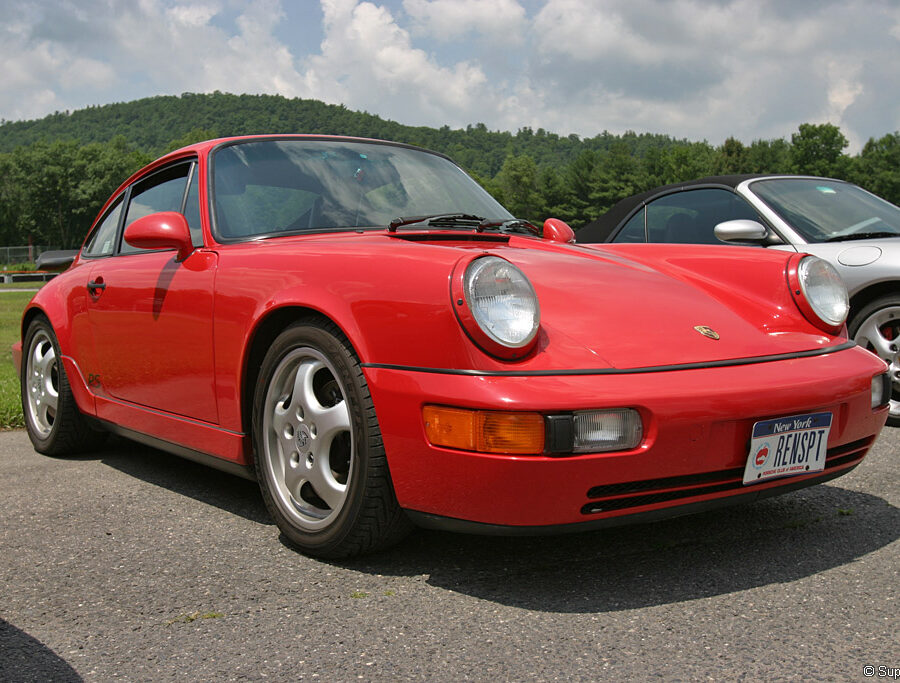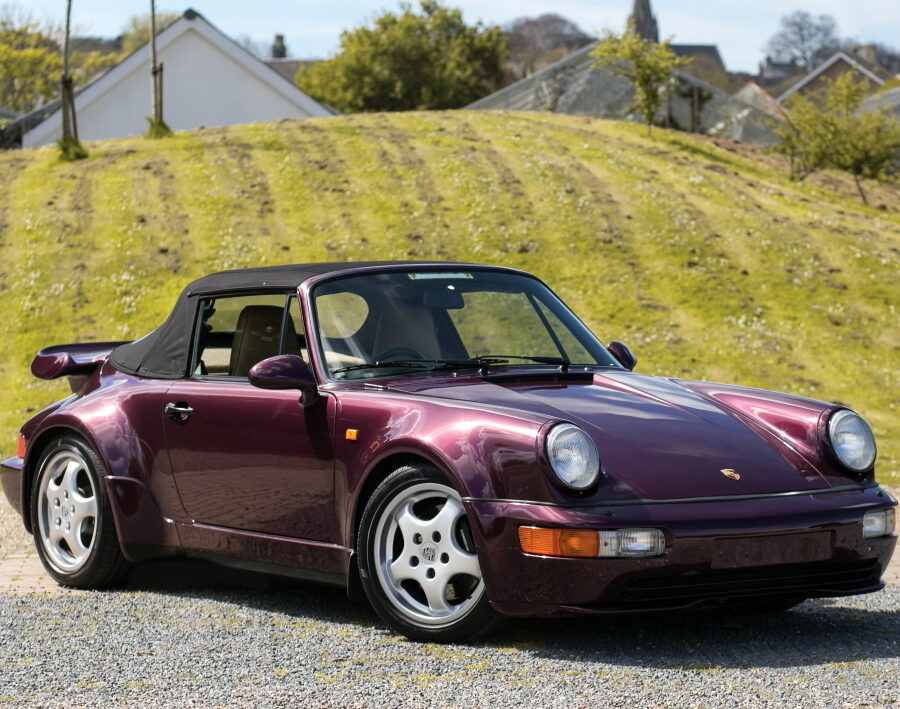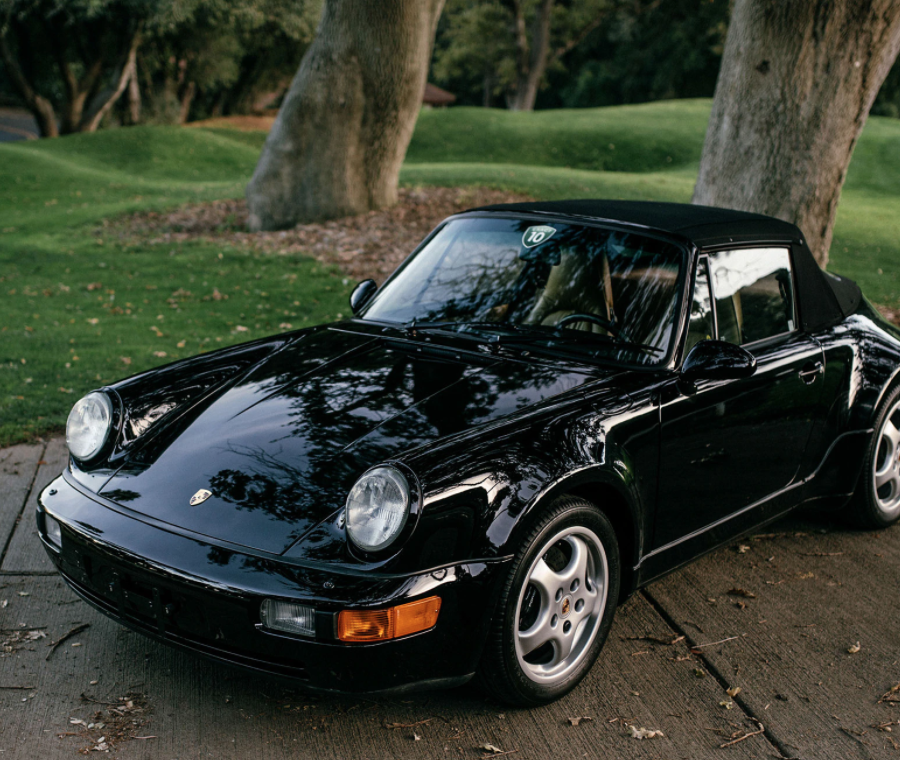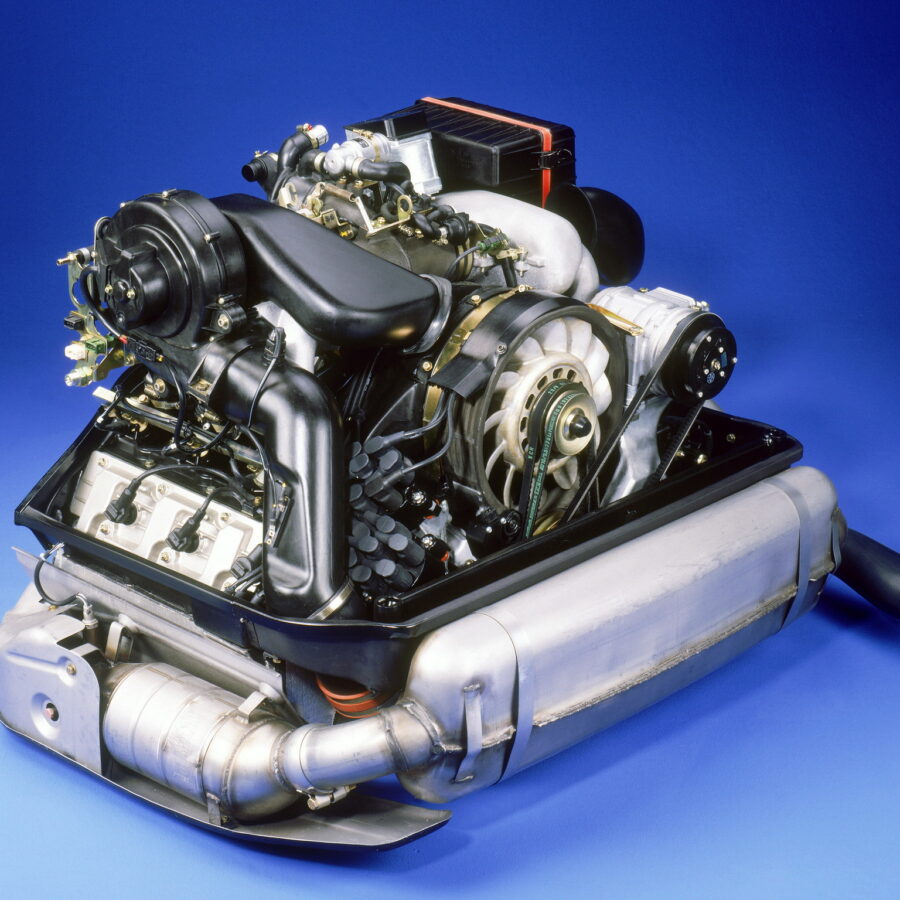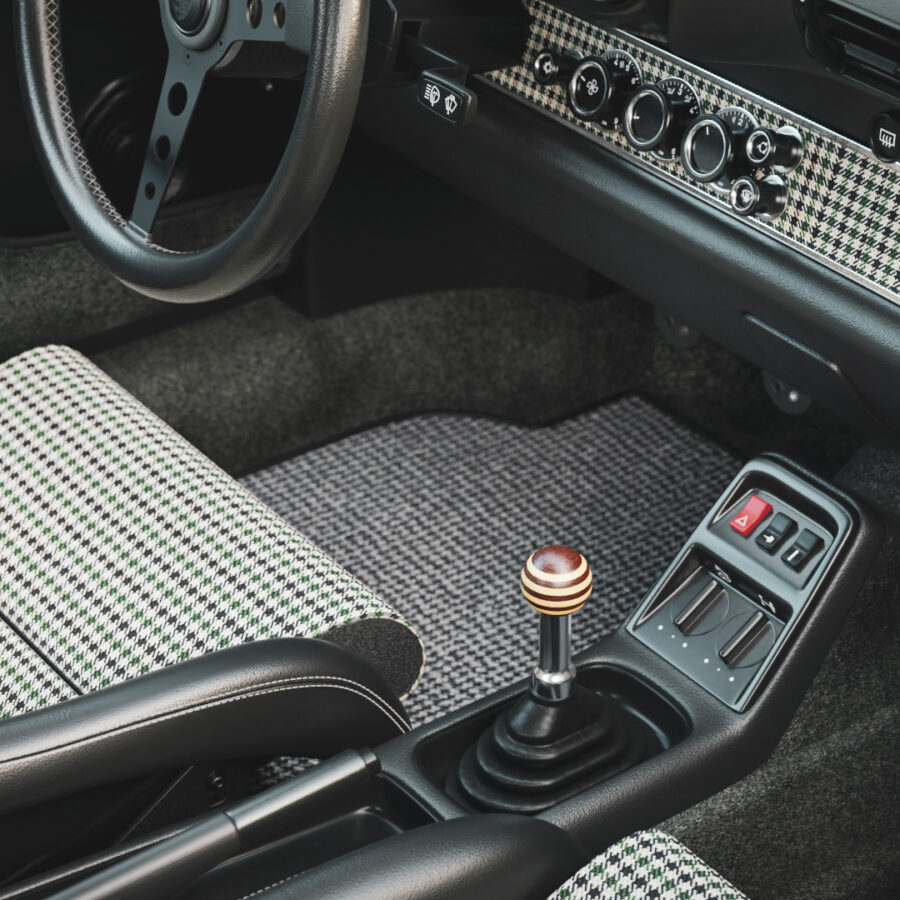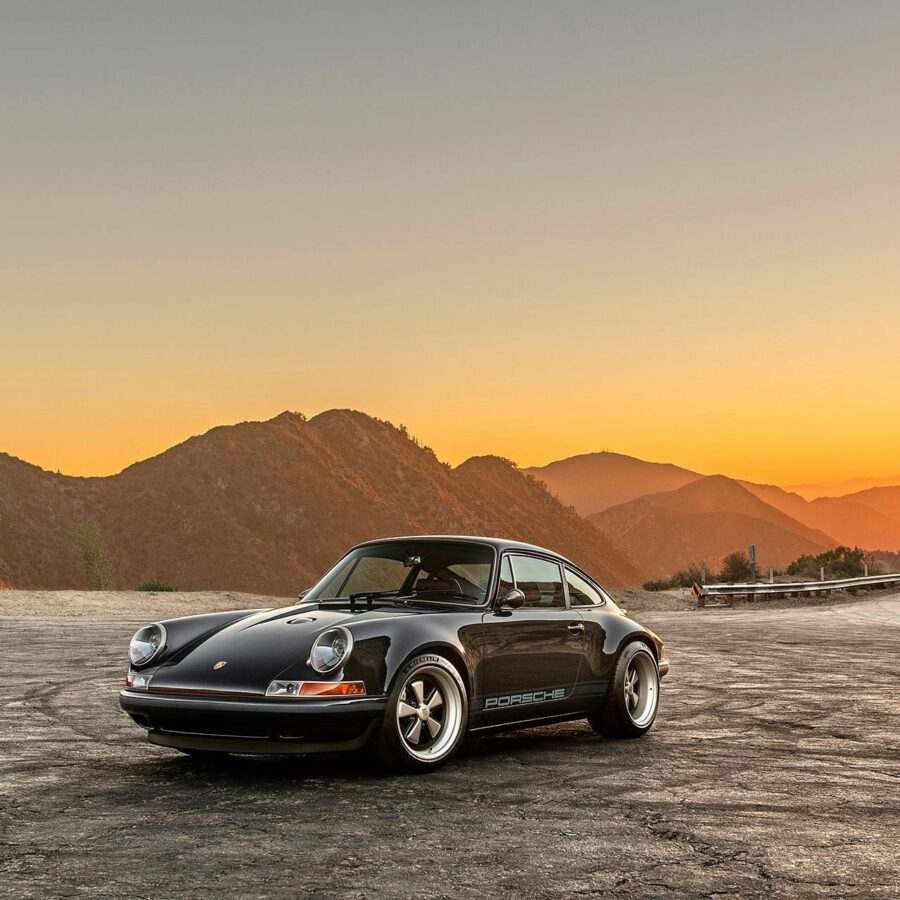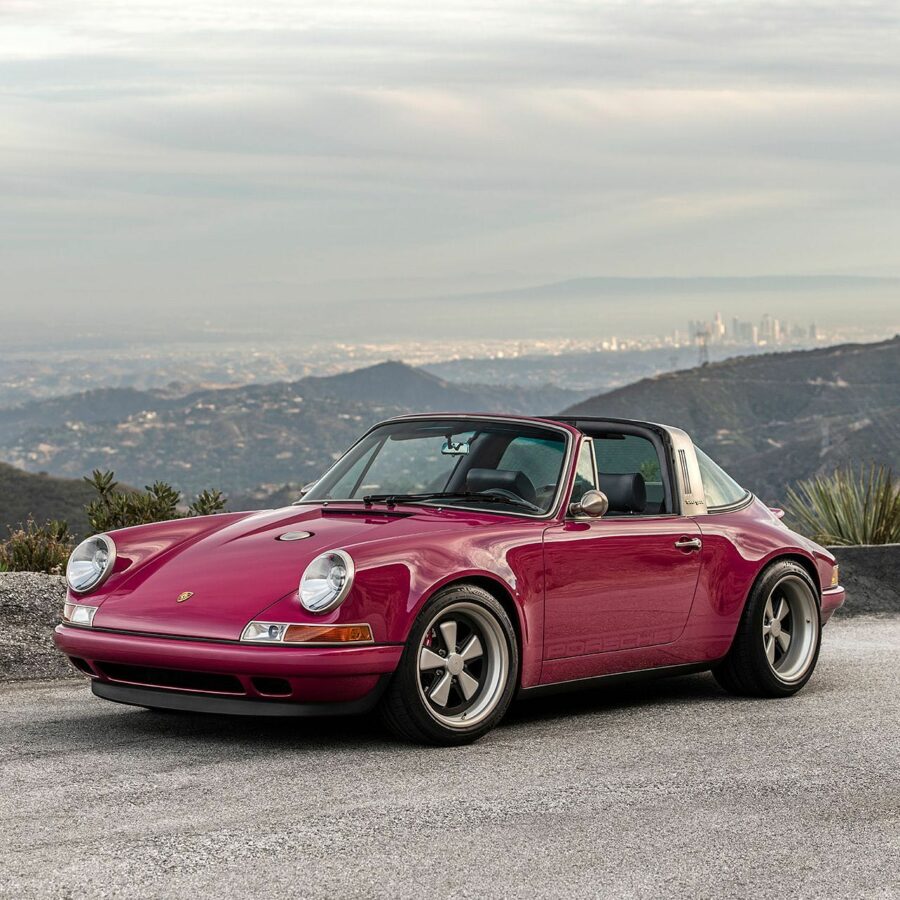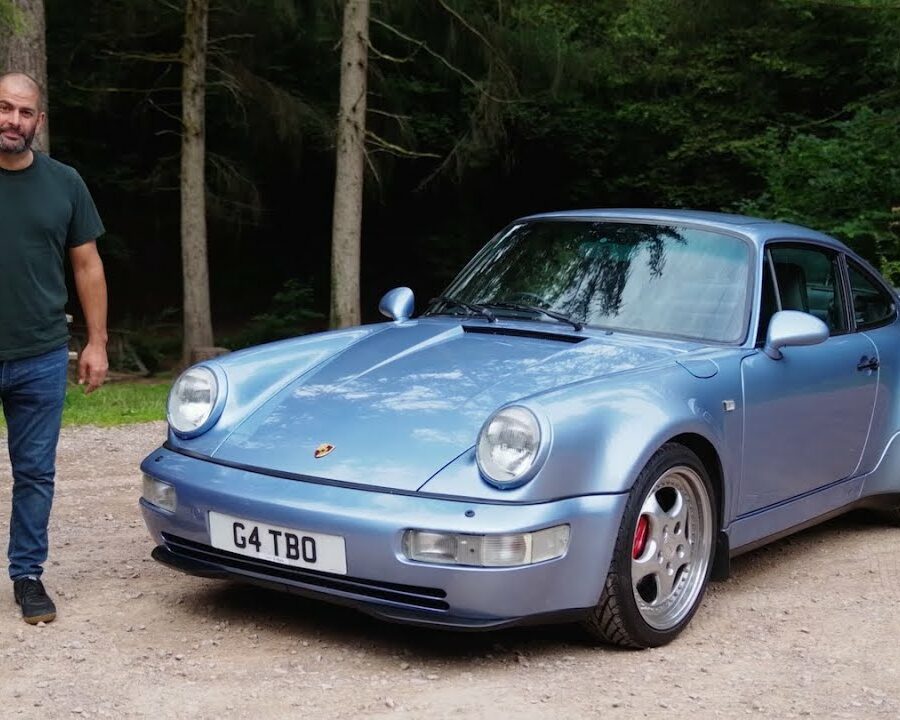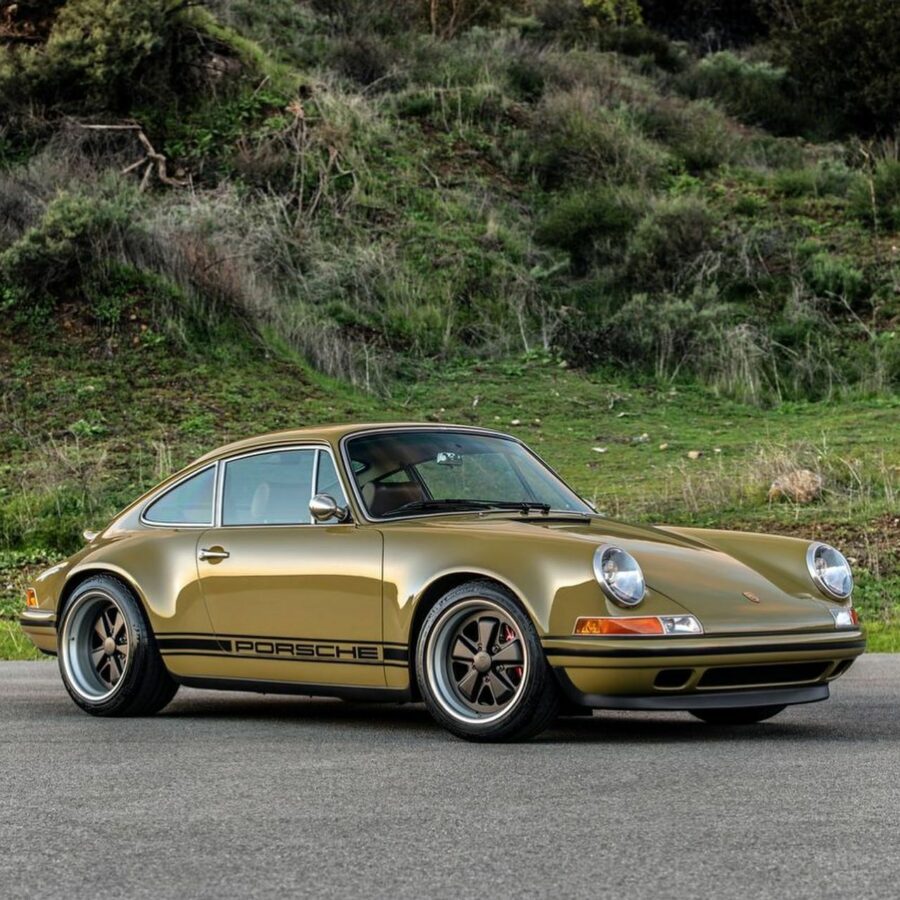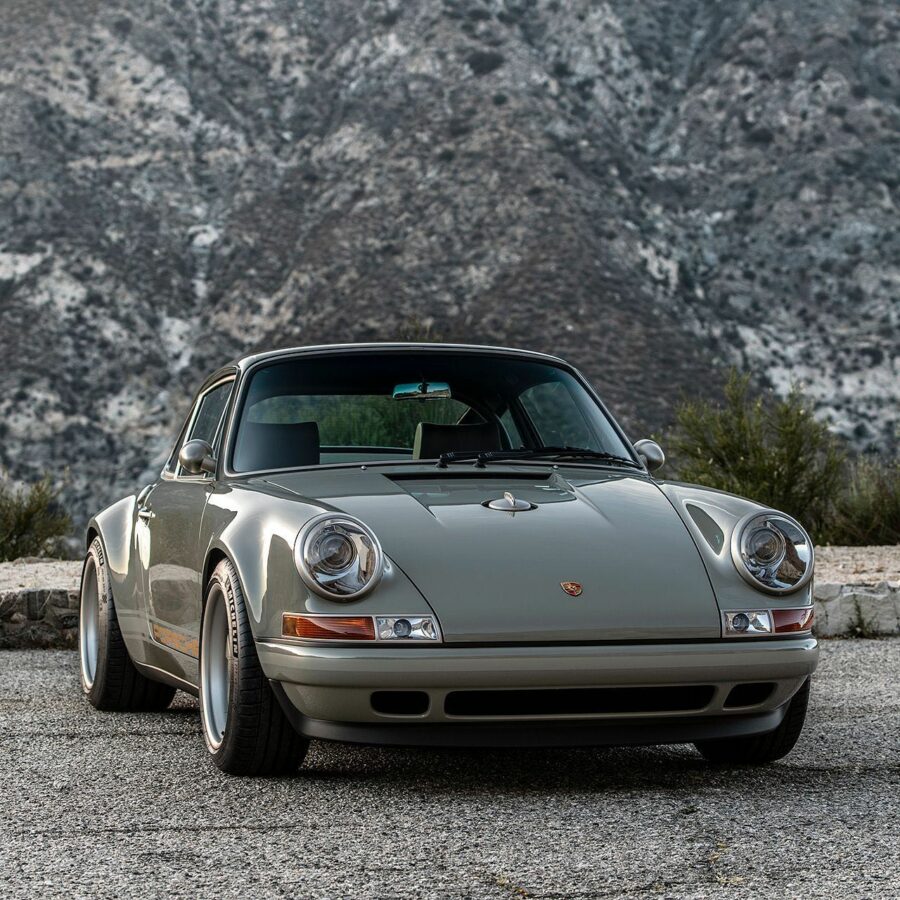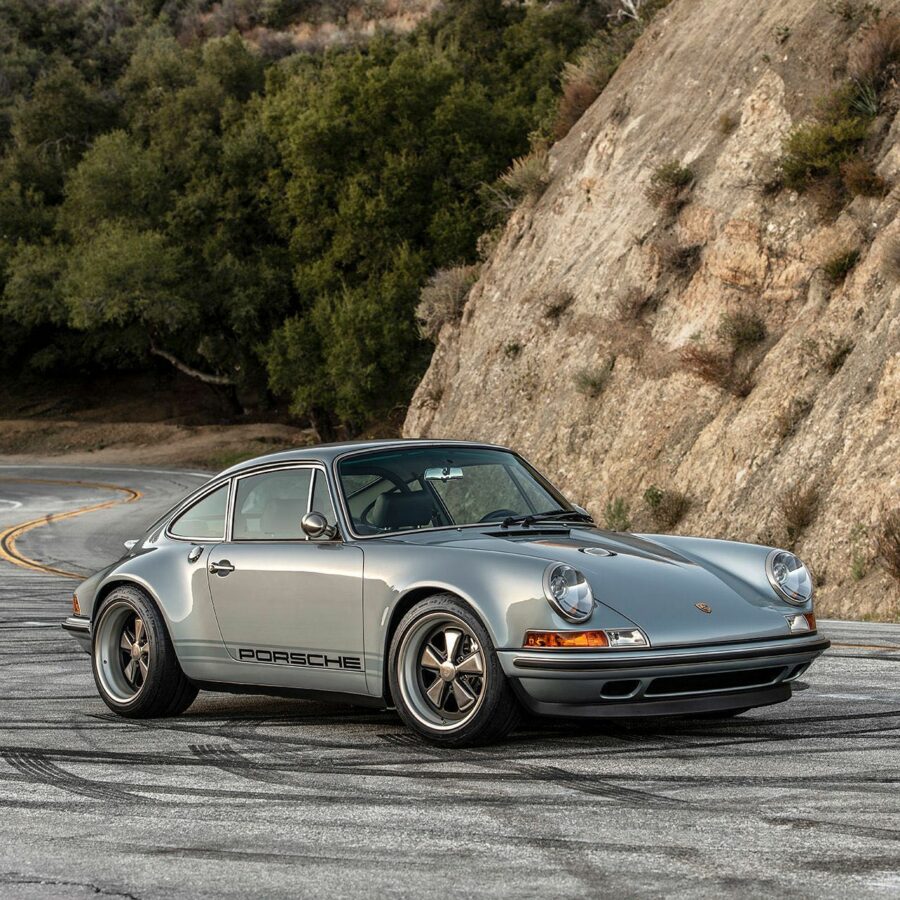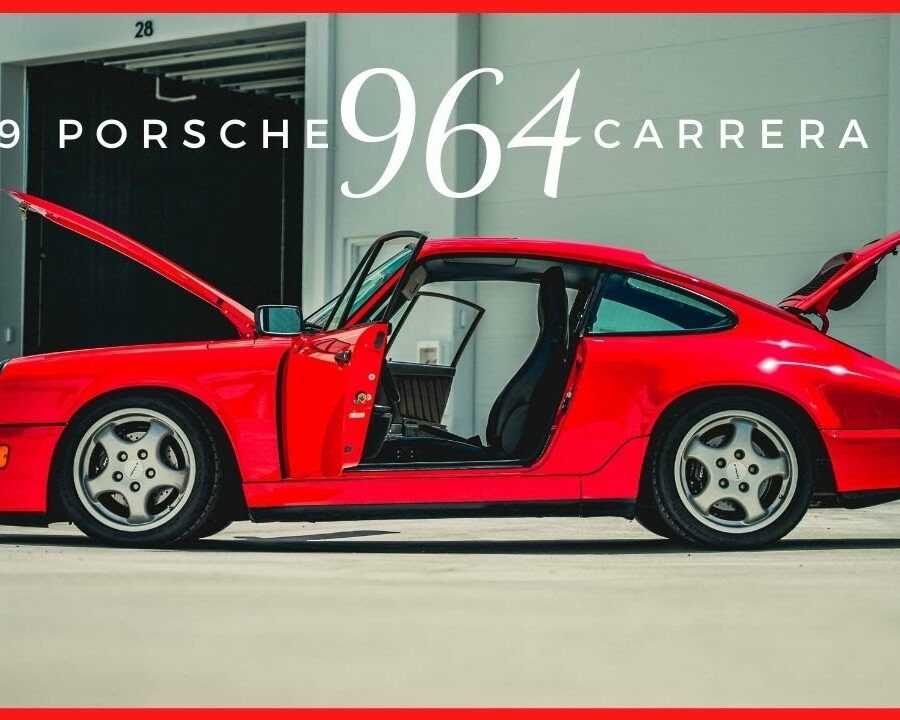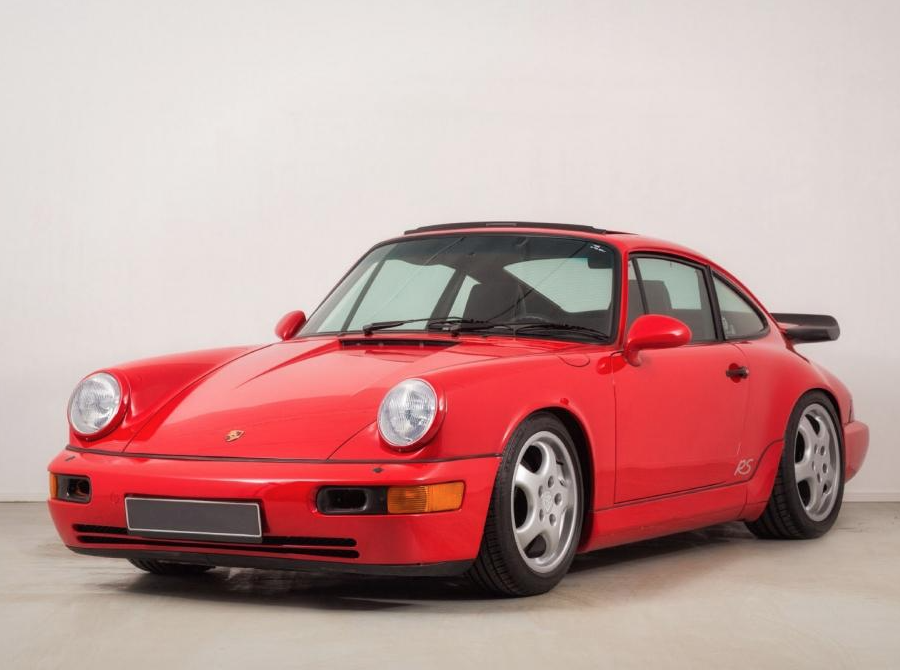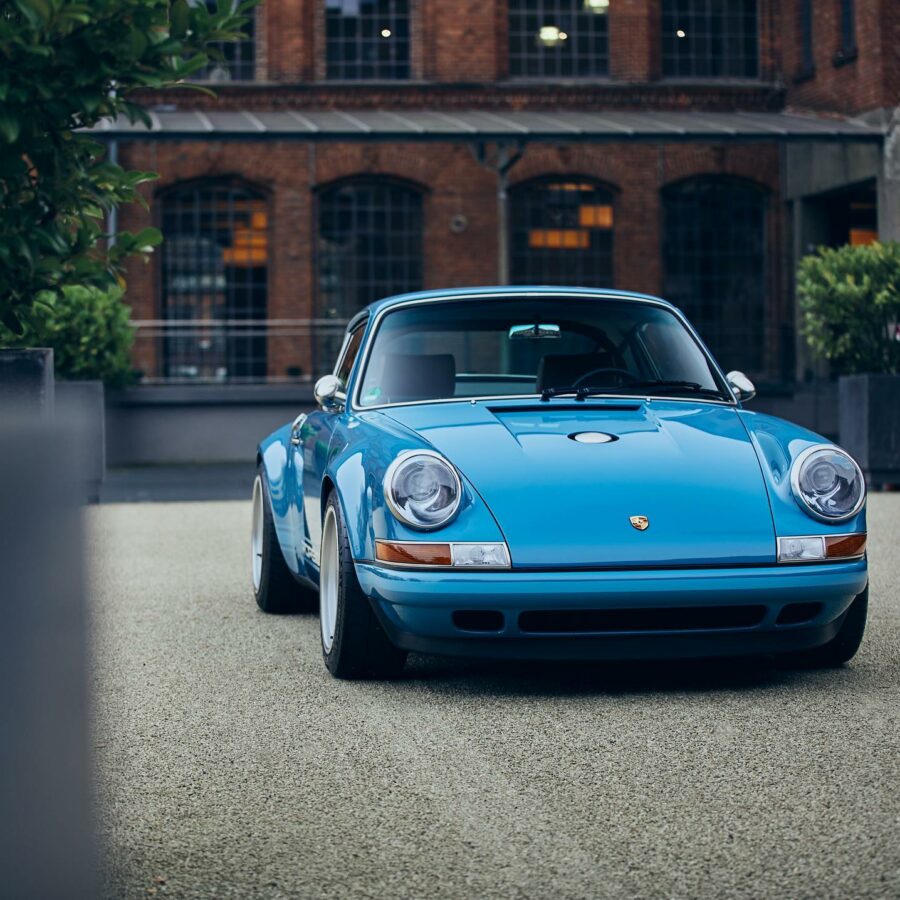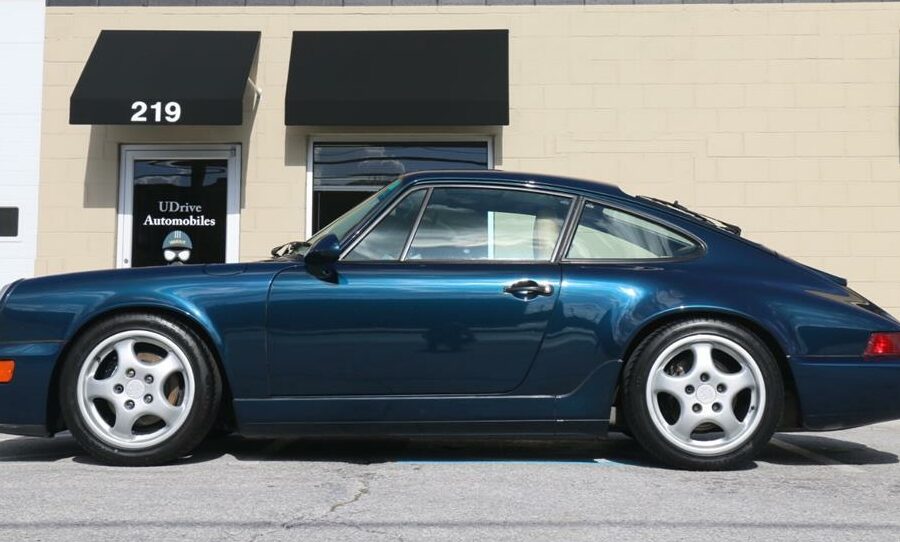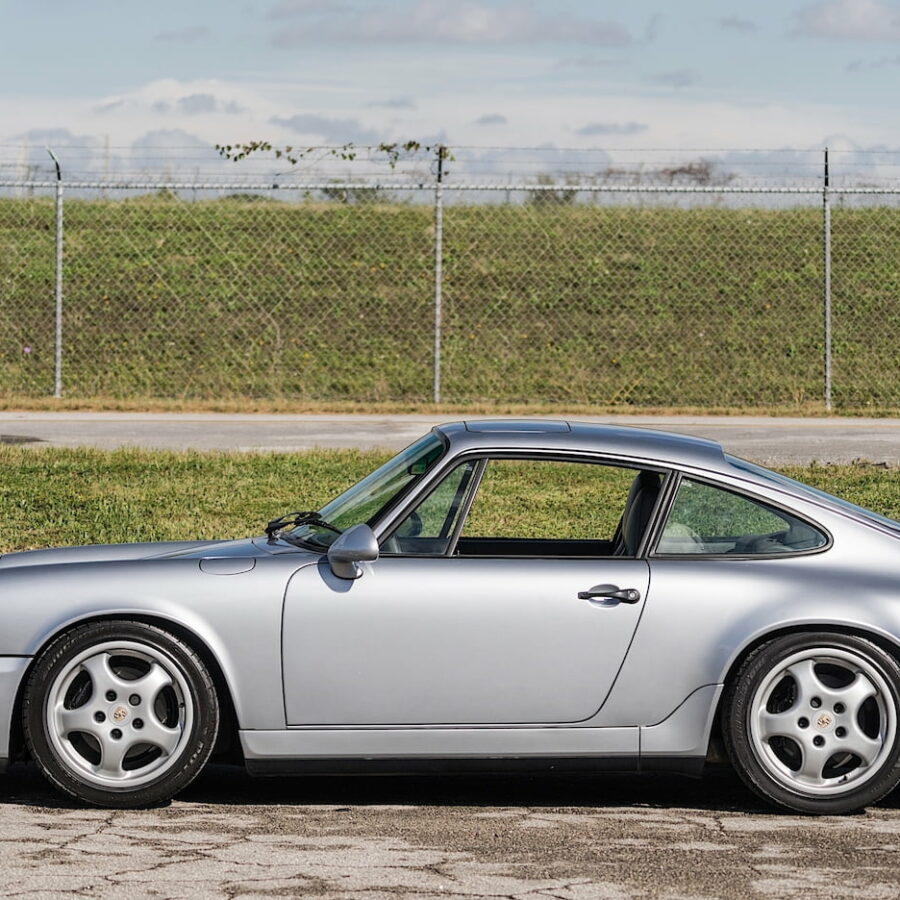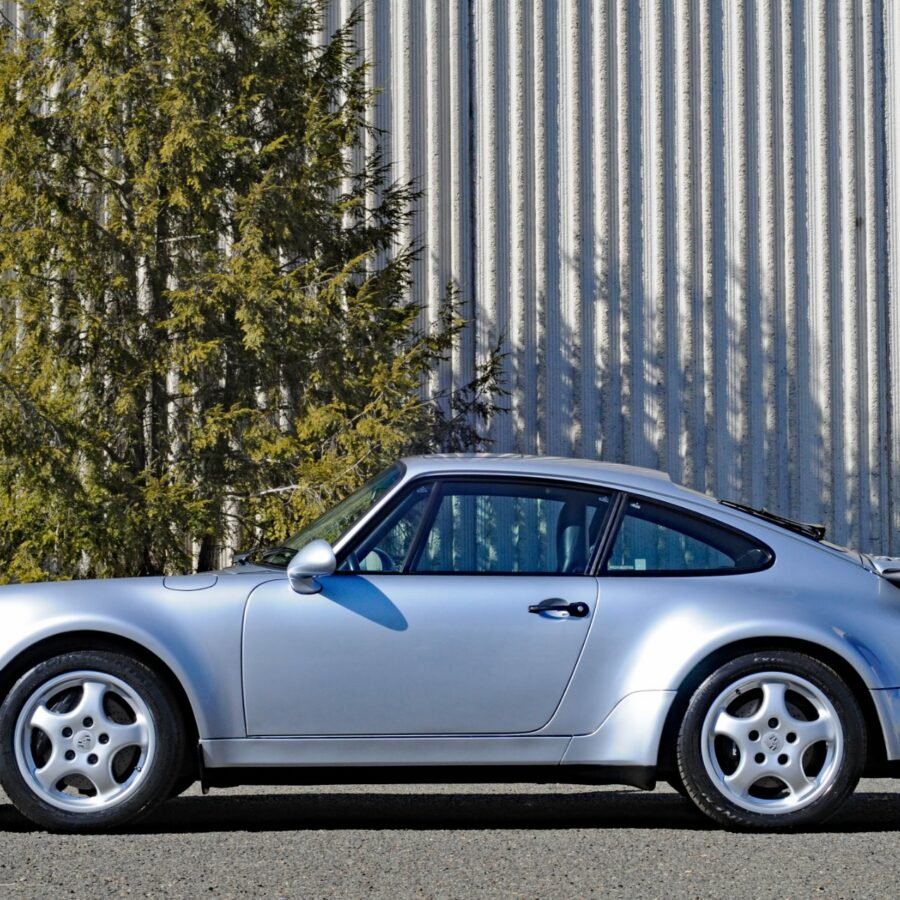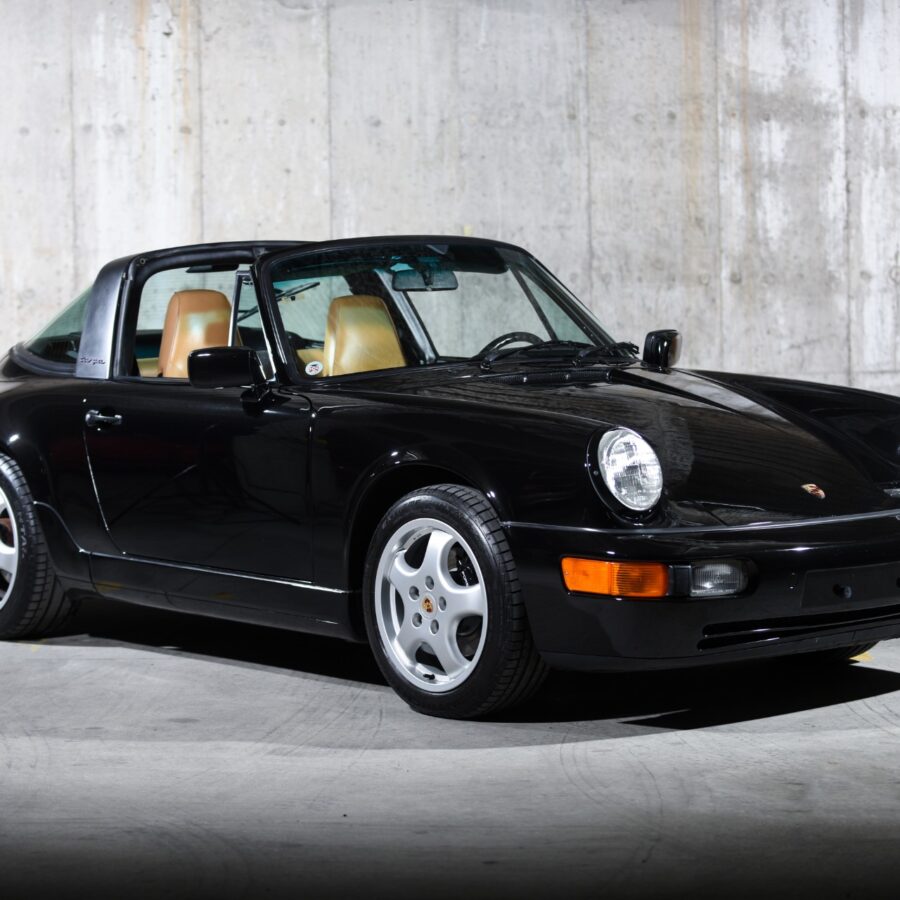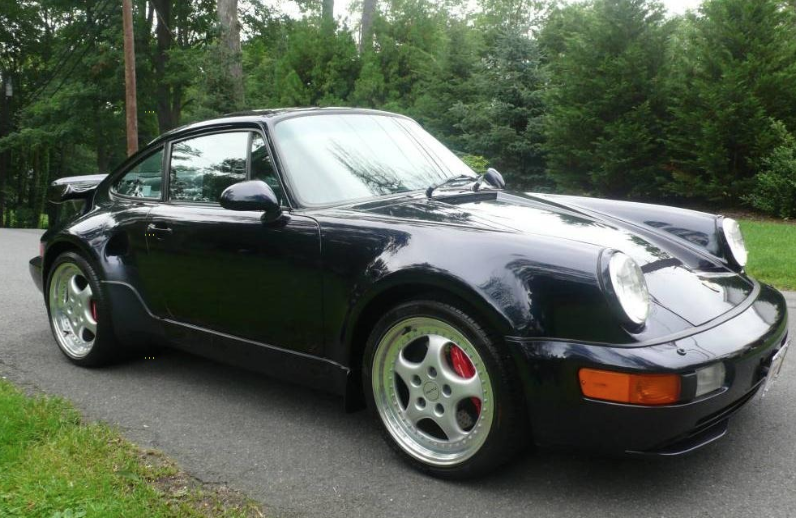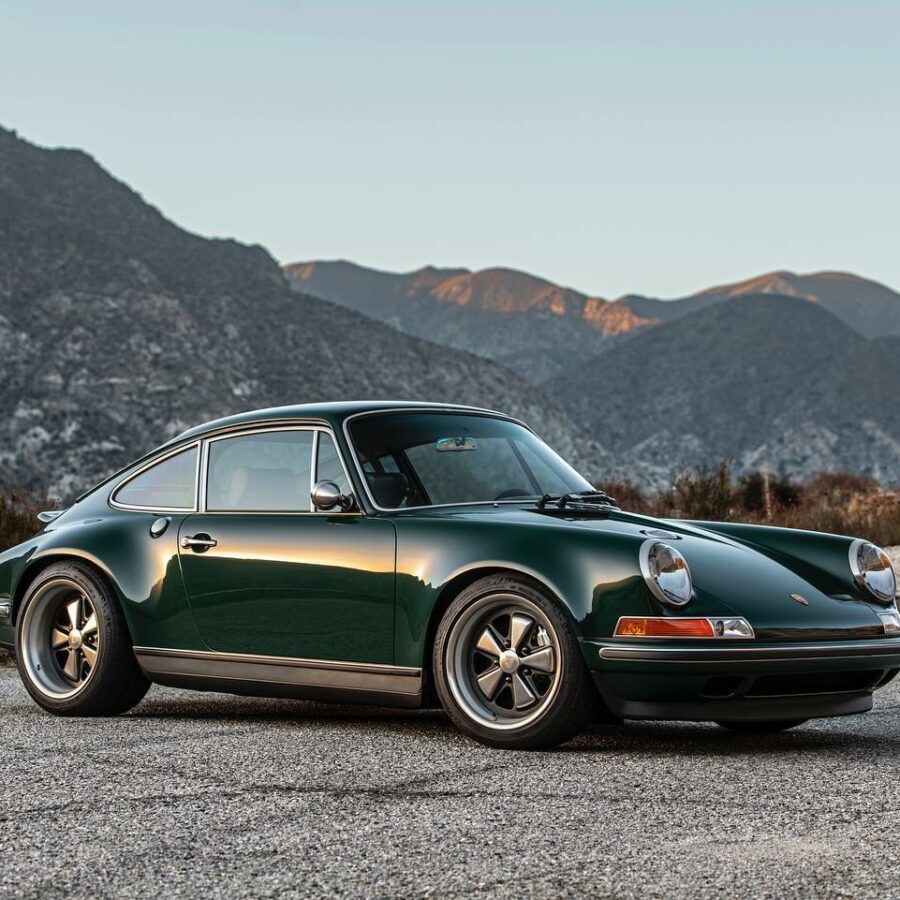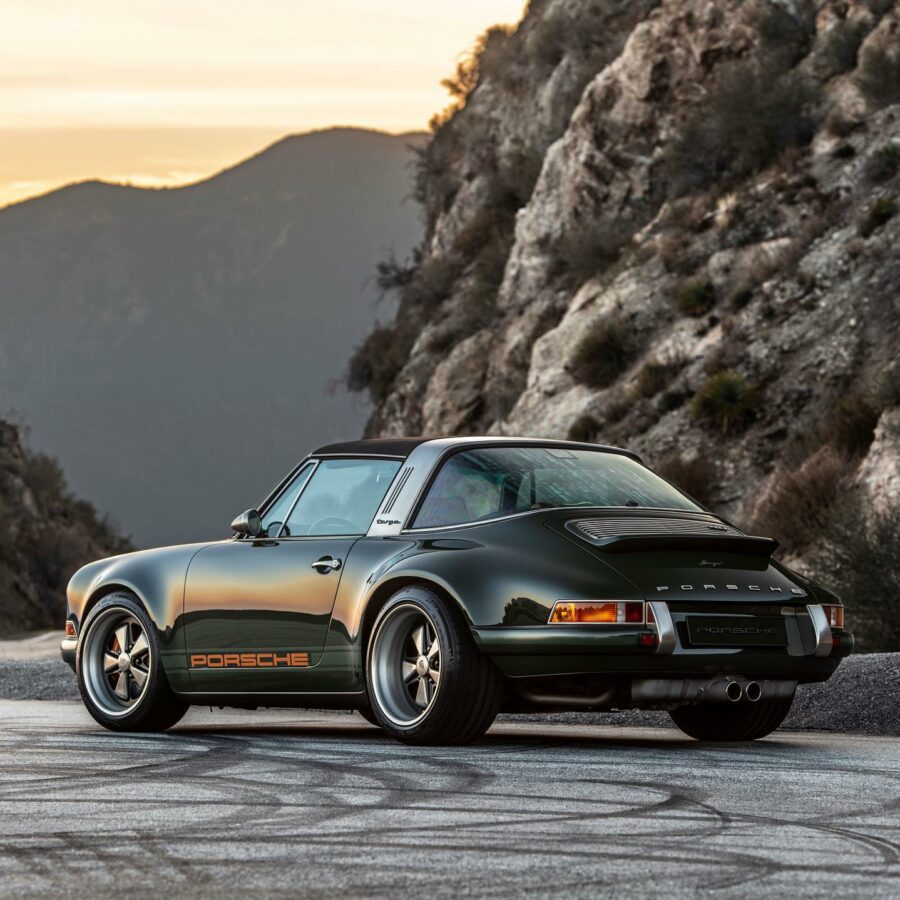Porsche 911 (964)
In 1989 Porsche came out with the 911 Carrera 4 (964). The new 911 was a contemporary take on the classic two-door sports car and came at a time when many were predicting the end of the 911 (the company was producing the 944 and working on the upcoming 968). The long run of the previous 911 meant the 964 needed a major update and Porsche delivered on that promise with 85% new components and virtually none of the predecessor’s architecture used. Save for the introduction of aerodynamic polyurethane bumpers and an automatically-extending rear spoiler which replaced the “whale tail” found on the 911 throughout the 1980’s, externally, the 964 kept the same style as the classic 911. The 964 rode on a completely redesigned chassis with rear suspension switching from torsion bar to trailing arms with Porsche’s “Weissach” rear axle, which added self-steering elements to reduce the chance of oversteer. It featured a naturally aspirated 3.6 liter boxer engine that produced an impressive 250 horsepower. See all of our Porsche 964 Research.
Porsche 911 964 (1989 – 1994) – Paint Colors (Exterior & Interior)
Color Options and Samples
Porsche 911 (964) – The Story
The Type 964 Represented One of the Most Significant Steps Forward for Porsche
Porsche 911 Carrera 4 (Turbo-Look) (964) (1994)
Model year 1994. Carrera 4 Wide-Body for the U.S
Porsche 911 Speedster (Turbo-Look) (964) (1993 – 1994)
15 Speedster got skunkworks love and got the widened Turbo body shell
Porsche 911 ’30 Jahre’ Anniversary (964) (1993 – 1994)
"30 jahre" anniversary 964 utilised a "Turbo" wide body melded to the four-wheel drive Carrera running gear.
Porsche 911 Carrera RS 3.8 (964)(1993)
Lightweight Turbo body, large rear wing and 18-inch Speedline wheels. Power came from a new 3.8-litre unit. A legend.
Porsche 911 Turbo 3.6 S “Flatnose” (964) (1994)
Final hurrah for 964 Turbo. Special Turbo 3.6 S was made available in flachbau 'slant nose' option.
Porsche 911 Speedster (964) (1993 – 1994)
964 body with the hood and windscreen of the Carrera 3.2 Speedster
Porsche 911 RS America (964) (1993 – 1994)
Lightened, limited edition, performance version for the U.S market.
Porsche 911 Turbo Cabriolet (964) (1993)
Built by Porsche Exclusive in 1993, only a handful of these custom cars were built for discerning buyers.
Porsche 911 Turbo S2 (964) (1992)
This is a road-legal variant of a race car version of a production road car, and an often forgotten part of the 964's history.
Porsche 911 America Roadster (964) (1992 – 1993)
US version of the Turbo-look C2 Cabriolet
Porsche 911 964 (MY1989 – 1994) – Sales Brochures
Sales Catalogs for the Type 964 Porsche 911
Porsche 911 964 (MY1989 – 1994) – Part Catalog
Spare Parts Catalog (Porsche PET) for the Type 964 Porsche 911
Porsche 911 (MY 1994) – Equipment & Options Codes
Full list of Equipment & Option Codes Decoder for the 1994 Porsche 911
Porsche 911 (MY 1993) – Equipment & Options Codes
Full list of Equipment & Option Codes Decoder for the 1993 Porsche 911
Porsche 911 (MY 1992) – Equipment & Options Codes
Full list of Equipment & Option Codes Decoder for the 1992 Porsche 911
Porsche 911 (MY 1991) – Equipment & Options Codes
Full list of Equipment & Option Codes Decoder for the 1991 Porsche 911
Porsche 911 (MY 1990) – Equipment & Options Codes
Full list of Equipment & Option Codes Decoder for the 1990 Porsche 911
Porsche 911 (MY 1989) – Equipment & Options Codes
Full list of Equipment & Option Codes Decoder for the 1989 Porsche 911
Porsche 911 Turbo 3.6 S (964) (1994)
'36S' package included body kit and mighty X88 'S' motor. 19 non 'slant nose' or Package cars were made for USA.



